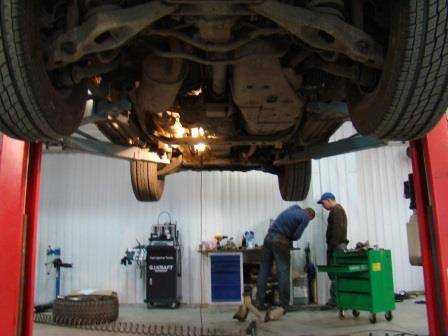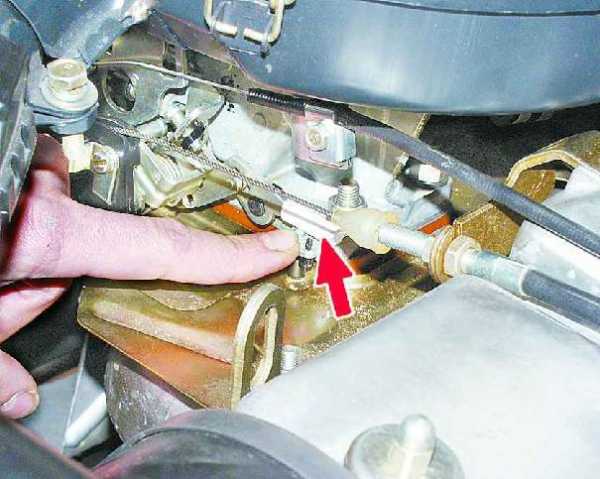West 8
West 8 - Wikipedia
West 8 is an urban planning and landscape architecture firm founded by Adriaan Geuze and Paul van Beek in the Rotterdam, Netherlands in 1987. It is known for its contemporary designs and innovative solutions to urban planning problems[1] using lighting, metal structures, and color. Van Beek is no longer part of the firm.
Geuze founded West 8 in 1987 in Rotterdam with Paul van Beek, who later left the firm.[2] Geuze won the Dutch Maaskant Award for young architects[3] in 1987 and the firm grew to employ more than 75 architects and planners, with offices in Rotterdam and New York City. The firm has produced several striking designs and is part of a wave of Dutch architects doing major works that have received international attention and recognition for novel design approaches.
Background[edit]
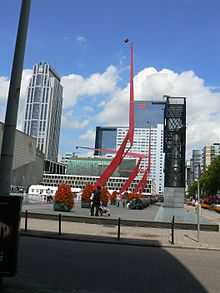
Geuze was born in Dordrecht in 1960 and graduated with a degree in landscape architecture from the University of Wageningen in 1987.[2] Geuze's 1993 essay "Accelerating Darwin" advocated a "sensation of spontaneous culture which the city dweller creates".[2] One of the firm's best known projects is the Schouwburgplein in Rotterdam (1996) using a raised platform lit from below and incorporating crane like structure to support lights that can be moved by inserting coins in a slot, "literally empowering the individual to light the square as they see fit."[2] At the Oosterscheldedam Flood Barrier (1994) the firm used black and white striped mussel shells as art and landscape, and at the Carrascoplein in Amsterdam (1998) they converted a "forgotten place" beneath viaducts into a parking lot of abstract patterns with patches of green space with illumination of the viaduct soffits creating a "Ballardian urban park."[2] West 8 developed masterplans for the Ypenburg Vinex showing that they can "marshal large plots and world-class architects with assurance", and produced a provocative design with palm trees in the sky plan for Arroyo Parkway, Pasadena, in 2002, and won a 2003 competition for an urban plan in Tromsø, Norway.[2]
Projects[edit]
The Whale housing projectWest 8's urban planning projects include striking new conceptions, such as the Schouwburgplein in Rotterdam, a large public square made of a lightweight metal structure which "floats" on top of the roof of a parking garage.[4] Geuze has been credited with having "almost single-handedly re-established landscape on the agenda of Dutch urbanism and is now taking his influence global in designing open spaces in or around buildings by most of the best Dutch contemporary architects."[2] West 8 brings landscape architecture into city planning in a functionalist and pragmatic way; since the distinction between town and country in places like the Netherlands has largely disappeared, novel ideas for landscape use are often called for by city planners to fulfill the needs of modern urbanites.[4]
In the Netherlands, they are responsible for masterplanning a large-scale low-rise residential development on two peninsulas comprising the formerly dilapidated Borneo Sporenburg, part of the eastern harbor area of Amsterdam,[5] as well as for the bicycle bridges and footbridges leading to the area.[6][7]
The Simcoe wavedeck nearing completion on Toronto's waterfrontWest 8 have produced several highly original bridges designs for bridges including the so-called "Reptile Bridge" proposal for a connection between Leidsche Rijn and Utrecht,[8] and the helical truss Vlaardingse Vaart Bridge in Vlaardingen,[9] a finalist for the Dutch Design Awards in 2009.[10] Their design for a pedestrian bridge in Amsterdam was nominated for the 2001 Design Prize of the city of Rotterdam.[11] Most recently, they won a design competition for a bridge across a railroad in Aarschot, Belgium.[12] Undulating wave shapes are also part of West 8's designs, with DTAH, for a series of wavedecks on Toronto's waterfront. The wooden planked walkways are part of a redevelopment project known as Waterfront Toronto. The first three of the four planned wavedecks, Rees wavedeck, Spadina wavedeck, and Simcoe wavedeck, have been completed.
In the United States, West 8 have gained a reputation for unorthodox design proposals, such as their proposal to fill in the World Trade Center site and turn it into a pasture.[13] They were finalists for the design of the new exterior for the New York Aquarium,[14] and were part of the team of firms that won the design contest[15] for an ambitious 40-acre (160,000 m2) park (including free bicycles) on the southern half of Governors Island in New York.[16][17][18]
A list of projects includes:
References[edit]
- ^ Ouroussoff, Nicolai (2005-02-24). "Confronting Blight With Hope". The New York Times. Retrieved 2009-01-23.
- ^ a b c d e f g Rattenbury, Kester; Rob Bevan; Kiernan Long (2004). Architects of Today. Laurence King. pp. 36–37. ISBN 978-1-85669-492-6.
- ^ Metz, Tracy (1995-05-19). "Het rijtjeshuis is de maat der dingen; Landschapsarchitect Adriaan Geuze en de overwoekering van Nederland" (in Dutch). NRC Handelsblad.
- ^ a b Lootsma, Bart (2000). Superdutch: New Architecture in the Netherlands. Princeton Architectural Press. pp. 233–35. ISBN 978-1-56898-239-7.
- ^ Hulsman, Bernard (2000-09-06). "'The whale' is frisse vloedgolf in een bruine zee" (in Dutch). NRC Handelsblad. Retrieved 2009-01-23.
- ^ "Borneo/Sporenburg Bicycle Bridge". Structurae. Retrieved 2009-01-23.
- ^ "Borneo/Sporenburg Pedestrian Bridge". Structurae. Retrieved 2009-01-23.
- ^ Vollaard, Piet (1998-03-08). "De slag om de Papendorpse Brug" (in Dutch). Archined. Retrieved 2009-01-23.
- ^ "Twist Bridge, Vlaardingen", Wallpaper, March 2, 2009 .
- ^ Finalists announced for Dutch Design Awards, World Landscape Architecture, September 4, 2009 .
- ^ Dijksterhuis, Edo (2001-03-05). "Design als ding in decor" (in Dutch). NRC Handelsblad. Retrieved 2009-01-23.
- ^ "West 8 wint prijsvraag brug in Aarschot". GWWKrant.nl. 2009-01-19. Retrieved 2009-01-23. [dead link]
- ^ "Why Not A Park?". The New York Times. 2004-05-16. Retrieved 2009-01-23.
- ^ Confessore, Nicholas (2006-10-06). "From 3 Finalists in Aquarium's Redesign, Swoops, Swirls and Great Water Views". The New York Times. Retrieved 2009-01-23.
- ^ Ouroussoff, Nicolai (2007-06-20). "Competing Visions for Governors Island". The New York Times. Retrieved 2009-01-23.
- ^ Ouroussoff, Nicolai (2007-12-20). "A Landscape's Isolation Is Turned Into a Virtue". The New York Times. Retrieved 2009-01-23.
- ^ Pogrebin, Robin (2007-12-20). "Park Plan Is Chosen for Governors Island". The New York Times. Retrieved 2009-01-23.
- ^ Shapiro, Julie (2008-05-22). "David Byrne hooks up Battery Building to an organ". Downtown Express. New York. Retrieved 2009-01-23.
External links[edit]
| Wikimedia Commons has media related to West 8. |
en.wikipedia.org
West 8 | Office | ArchDaily
BROWSE ALL FROM THIS FIRM HERE
↓
MADE BY HOLLAND to Transform Dutch Royal Palace into Forum for Innovation
12:30 - 9 June, 2017
The team known as MADE BY HOLLAND has been selected to transform the palace and gardens of Soestdijk, a 17th century country estate and former residence of the Dutch royal family, into a forum for innovation and entrepreneurship, where large-scale exhibitions and events can be held for a wide range of audiences.
+ 20
https://www.archdaily.com/873340/made-by-holland-to-transform-dutch-royal-palace-into-forum-for-innovation Patrick Lynch
Watch Adriaan Geuze of West 8 Explain the Design Behind New York's Largest Private Outdoor Gardens
15:05 - 23 May, 2017
In this video, West 8 co-founder Adriaan Geuze discusses the design process behind New York City’s largest private outdoor gardens, which will be located at One Manhattan Square in the Lower East Side. Currently under construction, the 800-foot-tall glass residential tower will feature more than an acre of exterior garden space designed by West 8 Urban Design and Landscape Architecture.
+ 24
https://www.archdaily.com/872008/watch-adriaan-geuze-of-west-8-explain-the-design-behind-new-yorks-largest-private-outdoor-gardens Patrick Lynch
OMA to Regenerate Historic Columbia Circle in Shanghai
11:50 - 3 April, 2017
https://www.archdaily.com/868421/oma-to-regenerate-historic-columbia-circle-in-shanghai Patrick Lynch
New Renderings Revealed of SHoP and West 8's $3.5 Billion Schuylkill Yards Project
14:30 - 28 March, 2017
https://www.archdaily.com/868075/new-renderings-revealed-of-shop-and-west-8-s-3-dollars-5-cents-billion-schuylkill-yards-project Patrick Lynch
8 Projects that Exemplify Moscow's Urban Movement
09:30 - 27 July, 2016
Zaryadye Park / Diller Scofidio + Renfro. Image Courtesy of Zaryadye ParkWhen it comes to urbanism these days, people’s attention is increasingly turning to Moscow. The city clearly intends to become one of the world’s leading megacities in the near future and is employing all necessary means to achieve its goal, with the city government showing itself to be very willing to invest in important urban developments (though not without some criticism).
A key player in this plan has been the Moscow Urban Forum. Although the forum’s stated goal is to find adequate designs for future megacities, a major positive side-effect is that it enables the city to organize the best competitions, select the best designers, and build the best urban spaces to promote the city of Moscow. The Forum also publishes research and academic documents to inform Moscow’s future endeavors; for example, Archaeology of the Periphery, a publication inspired by the 2013 forum and released in 2014, notably influenced the urban development on the outskirts of Moscow, but also highlighted the importance of combining urban development with the existing landscape.
+ 43
https://www.archdaily.com/792083/8-projects-that-exemplify-moscows-urban-movement Marie Chatel
"The Hills" by West 8 Set to Open on Governors Island
14:00 - 15 July, 2016
The latest stage of the Governors Island Park project, “The Hills,” is set to officially open to the public on this Tuesday July 19th – nearly a year ahead of schedule. Designed by internationally acclaimed urban design and landscape firm West 8, the park will feature ten acres of sloping landscapes that will provide residents and visitors with slides, art and unparalleled views of the New York Harbor.
+ 23
https://www.archdaily.com/791454/the-hills-by-west-8-set-to-open-on-governors-island Patrick Lynch
West 8 Reveal Plans for Sculpture Park at Duke University
12:00 - 17 June, 2016
Courtesy of West 8Urban design and landscape firm West 8 has released images of a newly designed sculpture park for Duke University. To be known as Three Valleys Sculpture Park, the 140 acre design will be set within the sprawling Duke Forest, alongside the Olmsted Brothers’ designed Campus Drive, and will help to strengthen the link between Duke’s east and west campuses.
https://www.archdaily.com/789704/west-8-reveal-plans-for-sculpture-park-at-duke-university Patrick Lynch
Waterlinie Museum / Jonathan Penne Architects + Rapp+Rapp + West 8
03:00 - 18 May, 2016
https://www.archdaily.com/787428/waterlinie-museum-jonathan-penne-architects-plus-rapp-plus-rapp Daniela Cardenas
MVRDV Unveil Monumental Urban Staircase in the Center of Rotterdam
15:01 - 16 May, 2016
The Staircase on Stationsplein, Rotterdam by MVRDV.. Image © Laurian GhinitoiuA little over a month since Rotterdam-based practice MVRDV announced a new temporary urban structure—a 180-step staircase, 29 meters tall and 57 meters long—for the heart of city of Rotterdam, the project has been officially opened. Those who ascend the staircase will find a temporary observation deck looking over Rotterdam Centraal, a rooftop bar, and the temporary reopening of the Kriterion cinema that was last active in the 1960s.
https://www.archdaily.com/787593/mvrdv-unveil-monumental-urban-staircase-in-the-center-of-rotterdam-holland-the-netherlands James Taylor-Foster
SHoP and West 8 to Masterplan Philadelphia’s “Schuylkill Yards”
14:00 - 11 March, 2016
Schuylkill Yards - proposed. Image © SHoP and West 8Working with Drexel University and master developer Brandywine Realty Trust, SHoP and West 8 will transform 14-acres of existing underutilized land with 6.5-acres of public open space to create a collaborative mixed-use neighborhood in Philadelphia’s University City submarket. Schuylkill Yards will feature a mix of 24/7 entrepreneurial spaces, educational facilities and research laboratories, corporate offices, residential and retail spaces, hospitality and cultural venues, as well as a robust public realm network that connects the existing neighborhoods with the adjacent Amtrak 30th Street Station.
Situated next to the third-busiest passenger rail station in the country, Schuylkill Yards will be connected to Philadelphia’s international airport and major cities along the Northeast corridor, making it a major innovation hub on the East Coast.
https://www.archdaily.com/783648/shop-and-west-8-to-masterplan-philadelphias-schuylkill-yards Karissa Rosenfield
BIG, West 8 + Atelier Ten Unveil Masterplan for Pittsburgh's Lower Hill District
14:00 - 18 November, 2015
https://www.archdaily.com/777408/big-west-8-plus-atelier-ten-unveil-masterplan-for-pittsburghs-lower-hill-district Rory Stott
Madrid Río Wins Harvard's Veronica Rudge Green Prize in Urban Design
12:30 - 10 November, 2015
Courtesy of Harvard GSDMadrid Río, a 120-hectare linear park that transformed the banks of Madrid's Manzanares River, has been awarded the Harvard Graduate School of Design's 12th Veronica Rudge Green Prize in Urban Design. Designed by Burgos & Garrido, Porras & La Casta, Rubio & Álvarez-Sala, and West 8, the public park completed its final phase this year - 10 years after being announced as winner of project's international competition.
“The decision to award Madrid Río the Green Prize in Urban Design was motivated by the jury’s desire to highlight the potential for thoughtfully planned and carefully executed mobility infrastructures to transform a city and its region,” commented jury chair Rahul Mehrotra, Professor of Urban Design and Planning at Harvard GSD. “The extent to which the project harnesses the deployment of new infrastructures as an opportunity to repair and regenerate the city through carefully articulated design interventions is particularly valuable within the context of contemporary urbanization globally.”
+ 20
https://www.archdaily.com/776943/madrid-rio-wins-harvards-veronica-rudge-green-prize-in-urban-design Karissa Rosenfield
Video Series: Six Lessons from Six Leading Dutch Designers
09:30 - 23 September, 2015
Rotterdam Markthal / MVRDV. Image © Daria Scagliola+Stijn BrakkeeThere's something special about architecture in The Netherlands. From MVRDV's iconic Markthal in Rotterdam to WAM's whimsically stacked Inntel Hotel in Zaandam, for years Dutch design has questioned accepted architectural norms. The country has long been considered a leader in design, catalyzed in part by The Netherlands' famous architectural trailblazer Rem Koolhaas. Since 1975 Koolhaas' Rotterdam-based firm OMA has realized dozens of unorthodox designs and has been linked with the creation of more than forty major architecture practices worldwide.
In 2000 Bart Lootsma released Superdutch, a bestselling opus on the mythology of Dutch architecture and its thought leaders, which provided a glimpse into the enduring humanist approach to design that has earned global praise for the country's architects. In the book, Lootsma profiled a handful of Dutch firms including UNStudio, West 8 and MVRDV. Fifteen years later, students from Canada's Simon Fraser University formed a collective called Groep Drie to continue the conversation. From Herman Hertzberger to Ben van Berkel, Groep Drie sat down with The Netherlands' most innovative designers to talk urbanism, spiritualism, color, and more.
Read on to find out what The Netherlands' leading architects had to say.
https://www.archdaily.com/773868/video-six-lessons-from-six-leading-dutch-designers Finn MacLeod
West 8 and Snoeck Win Competition to Redesign Het Zand Square in Bruges
12:00 - 20 June, 2015
© West 8The Bruges City Council has selected West 8 + Snoeck & Partners, in partnership with Atelier Roland-Jéol, as the winners of a competition to design the ‘t Zand, also known as Het Zand Square, in Bruges, Belgium.
The 8,500-square-meter historic square has remained unchanged for the past 30 years, and the Council felt that an update was duly needed. In January, five out of 20 designs were shortlisted, and on June 16, the winner was chosen at a presentation before a jury of City Council representatives and external experts.
https://www.archdaily.com/644243/west-8-and-snoeck-and-partners-win-competition-to-redesign-het-zand-square-in-bruges Sabrina Santos
OMA Among 5 Shortlisted for Singapore Rail Corridor
12:25 - 3 June, 2015
Singapore Rail Corridor. Image Courtesy of OMAMVRDV, OMA and DP Architects are among five shortlisted teams competing to design the Singapore Rail Corridor. Spanning the island south to north, from the Tanjong Pagar Railway Station to the Woodlands Checkpoint, the corridor is the site of Singapore’s previous rail link to Malaysia. With this competition, the Singapore government hopes to develop a feasible plan to transform the 24 kilometer stretch into a public greenway that connects four important urban nodes: Buona Vista, the Bukit Timah Railway Station area, the former Bukit Timah Fire Station, and Kranji.
“The expanse of the corridor running through the centre of the entire country presents an unprecedented opportunity to develop a new typology of landscape with transformative effects for the country as a whole. This is a project that has the potential to improve quality of life for generations to come," says OMA Partner Michael Kokora.
64 teams responded to the government's call for ideas, and now only five have been selected to move onto the competition's second stage. These five teams are...
https://www.archdaily.com/638963/oma-among-5-shortlisted-for-singapore-rail-corridor Karissa Rosenfield
SHoP and West 8 Propose New "Innovation District" for Miami
15:30 - 28 May, 2015
© SHoP ArchitectsSHoP Architects and West 8 have teamed up with developer Michael Simkins to propose a new 10-acre "Innovation District" in Miami's Park West neighborhood. If approved, the four-block area would foster the "growth of creative technology industries" within the city and provide "world-class urban amenities" to the surrounding communities.
"True innovation today requires the very thing that cities, at their best, have always provided: creative proximity. Even as it continues its rapid development, the city of Miami does not currently offer significant urban environments that meet the necessary criteria," said SHoP in a press release.
https://www.archdaily.com/636383/shop-and-west-8-propose-new-innovation-district-for-miami Karissa Rosenfield
Architects And Coding: Why You Should Treat Your Software Like Your Smartphone
10:30 - 25 April, 2015
In 2014 renowned Dutch politician Neelie Kroes, then a commissioner for the European Union, stated that coding should be taught in elementary school in the Netherlands, arguing that “Coding is the reading and writing of the future” and that if the Dutch didn’t incorporate it into their education system it would fall behind school systems in other countries. The reactions to both Kroes’ statement and Michael Kilkelly's article "5 Reasons Architects Should Learn To Code" were quite similar. Those already capable of writing code agreed; many who have never even seen, let alone written any script responded negatively. Many reactions to Micheal Kilkelly's article covered the same ideas: “There's no time!” “Coding is not designing!” Or just plain, “No!”
https://www.archdaily.com/623708/architects-and-coding-why-you-should-treat-your-software-like-your-smartphone Rob Koningen
KPMB and West 8 Selected to Redesign Toronto Ferry Terminal
18:00 - 15 April, 2015
Courtesy of West 8KPMB Architects, West 8 and Greenberg Consultants have been announced as winners of a competition to revitalize Toronto's Jack Layton Ferry Terminal and Harbor Square Park. The winning proposal, "Harbour Landing" envisions a terminal embedded within the surrounding park and topped with a lush public green space that expands the waterfront park.
"The vision for the area will result in a welcoming gateway to the Toronto Islands – one of the City's most unique and cherished parks – with amenities and infrastructure to support the approximately 1.3 million visitors who use the ferry each year," said competition organizers, Waterfront Toronto and the City of Toronto in a press release.
https://www.archdaily.com/620071/kpmb-and-west-8-selected-to-redesign-toronto-ferry-terminal Karissa Rosenfield
www.archdaily.com
West 8 • Wikipedia
West 8 is an urban planning and landscape architecture firm founded by Adriaan Geuze and Paul van Beek in the Rotterdam, Netherlands in 1987. It is known for its contemporary designs and innovative solutions to urban planning problems[1] using lighting, metal structures, and color. Van Beek is no longer part of the firm.
Geuze founded West 8 in 1987 in Rotterdam with Paul van Beek, who later left the firm.[2] Geuze won the Dutch Maaskant Award for young architects[3] in 1987 and the firm grew to employ more than 75 architects and planners, with offices in Rotterdam and New York City. The firm has produced several striking designs and is part of a wave of Dutch architects doing major works that have received international attention and recognition for novel design approaches.
Background [ edit ]

Geuze was born in Dordrecht in 1960 and graduated with a degree in landscape architecture from the University of Wageningen in 1987.[2] Geuze's 1993 essay "Accelerating Darwin" advocated a "sensation of spontaneous culture which the city dweller creates".[2] One of the firm's best known projects is the Schouwburgplein in Rotterdam (1996) using a raised platform lit from below and incorporating crane like structure to support lights that can be moved by inserting coins in a slot, "literally empowering the individual to light the square as they see fit."[2] At the Oosterscheldedam Flood Barrier (1994) the firm used black and white striped mussel shells as art and landscape, and at the Carrascoplein in Amsterdam (1998) they converted a "forgotten place" beneath viaducts into a parking lot of abstract patterns with patches of green space with illumination of the viaduct soffits creating a "Ballardian urban park."[2] West 8 developed masterplans for the Ypenburg Vinex showing that they can "marshal large plots and world-class architects with assurance", and produced a provocative design with palm trees in the sky plan for Arroyo Parkway, Pasadena, in 2002, and won a 2003 competition for an urban plan in Tromsø, Norway.[2]
Projects [ edit ]
The Whale housing projectWest 8's urban planning projects include striking new conceptions, such as the Schouwburgplein in Rotterdam, a large public square made of a lightweight metal structure which "floats" on top of the roof of a parking garage.[4] Geuze has been credited with having "almost single-handedly re-established landscape on the agenda of Dutch urbanism and is now taking his influence global in designing open spaces in or around buildings by most of the best Dutch contemporary architects."[2] West 8 brings landscape architecture into city planning in a functionalist and pragmatic way; since the distinction between town and country in places like the Netherlands has largely disappeared, novel ideas for landscape use are often called for by city planners to fulfill the needs of modern urbanites.[4]
In the Netherlands, they are responsible for masterplanning a large-scale low-rise residential development on two peninsulas comprising the formerly dilapidated Borneo Sporenburg, part of the eastern harbor area of Amsterdam,[5] as well as for the bicycle bridges and footbridges leading to the area.[6][7]
The Simcoe wavedeck nearing completion on Toronto's waterfrontWest 8 have produced several highly original bridges designs for bridges including the so-called "Reptile Bridge" proposal for a connection between Leidsche Rijn and Utrecht,[8] and the helical truss Vlaardingse Vaart Bridge in Vlaardingen,[9] a finalist for the Dutch Design Awards in 2009.[10] Their design for a pedestrian bridge in Amsterdam was nominated for the 2001 Design Prize of the city of Rotterdam.[11] Most recently, they won a design competition for a bridge across a railroad in Aarschot, Belgium.[12] Undulating wave shapes are also part of West 8's designs, with DTAH, for a series of wavedecks on Toronto's waterfront. The wooden planked walkways are part of a redevelopment project known as Waterfront Toronto. The first three of the four planned wavedecks, Rees wavedeck, Spadina wavedeck, and Simcoe wavedeck, have been completed.
In the United States, West 8 have gained a reputation for unorthodox design proposals, such as their proposal to fill in the World Trade Center site and turn it into a pasture.[13] They were finalists for the design of the new exterior for the New York Aquarium,[14] and were part of the team of firms that won the design contest[15] for an ambitious 40-acre (160,000 m2) park (including free bicycles) on the southern half of Governors Island in New York.[16][17][18]
A list of projects includes:
References [ edit ]
- ^ Ouroussoff, Nicolai (2005-02-24). "Confronting Blight With Hope". The New York Times. Retrieved 2009-01-23.
- ^ a b c d e f g Rattenbury, Kester; Rob Bevan; Kiernan Long (2004). Architects of Today. Laurence King. pp. 36–37. ISBN 978-1-85669-492-6.
- ^ Metz, Tracy (1995-05-19). "Het rijtjeshuis is de maat der dingen; Landschapsarchitect Adriaan Geuze en de overwoekering van Nederland" (in Dutch). NRC Handelsblad.
- ^ a b Lootsma, Bart (2000). Superdutch: New Architecture in the Netherlands. Princeton Architectural Press. pp. 233–35. ISBN 978-1-56898-239-7.
- ^ Hulsman, Bernard (2000-09-06). "'The whale' is frisse vloedgolf in een bruine zee" (in Dutch). NRC Handelsblad. Retrieved 2009-01-23.
- ^ "Borneo/Sporenburg Bicycle Bridge". Structurae. Retrieved 2009-01-23.
- ^ "Borneo/Sporenburg Pedestrian Bridge". Structurae. Retrieved 2009-01-23.
- ^ Vollaard, Piet (1998-03-08). "De slag om de Papendorpse Brug" (in Dutch). Archined. Retrieved 2009-01-23.
- ^ "Twist Bridge, Vlaardingen", Wallpaper, March 2, 2009 .
- ^ Finalists announced for Dutch Design Awards, World Landscape Architecture, September 4, 2009 .
- ^ Dijksterhuis, Edo (2001-03-05). "Design als ding in decor" (in Dutch). NRC Handelsblad. Retrieved 2009-01-23.
- ^ "West 8 wint prijsvraag brug in Aarschot". GWWKrant.nl. 2009-01-19. Retrieved 2009-01-23. [dead link]
- ^ "Why Not A Park?". The New York Times. 2004-05-16. Retrieved 2009-01-23.
- ^ Confessore, Nicholas (2006-10-06). "From 3 Finalists in Aquarium's Redesign, Swoops, Swirls and Great Water Views". The New York Times. Retrieved 2009-01-23.
- ^ Ouroussoff, Nicolai (2007-06-20). "Competing Visions for Governors Island". The New York Times. Retrieved 2009-01-23.
- ^ Ouroussoff, Nicolai (2007-12-20). "A Landscape's Isolation Is Turned Into a Virtue". The New York Times. Retrieved 2009-01-23.
- ^ Pogrebin, Robin (2007-12-20). "Park Plan Is Chosen for Governors Island". The New York Times. Retrieved 2009-01-23.
- ^ Shapiro, Julie (2008-05-22). "David Byrne hooks up Battery Building to an organ". Downtown Express. New York. Retrieved 2009-01-23.
External links [ edit ]
| Wikimedia Commons has media related to West 8. |
wikipedia.moesalih.com
west 8 - WikiVisually
1. Urban planning – Urban planning is also referred to as urban and regional planning, regional planning, town planning, city planning, rural planning or some combination in various areas worldwide. It takes many forms and it can share perspectives and practices with urban design, urban planning guides orderly development in urban, suburban and rural areas. Practitioners of urban planning are concerned with research and analysis, strategic thinking, architecture, urban design, public consultation, policy recommendations, implementation and management. Urban planners work with the fields of architecture, landscape architecture, civil engineering. Early urban planners were often members of these cognate fields, today urban planning is a separate, independent professional discipline. The discipline is the category that includes different sub-fields such as land-use planning, zoning, economic development, environmental planning. There is evidence of planning and designed communities dating back to the Mesopotamian, Indus Valley, Minoan. Archeologists studying the ruins of cities in these areas find paved streets that were out at right angles in a grid pattern. The idea of a planned out urban area evolved as different civilizations adopted it, beginning in the 8th century BCE, Greek city states were primarily centered on orthogonal plans. The ancient Romans, inspired by the Greeks, also used orthogonal plans for their cities, city planning in the Roman world was developed for military defense and public convenience. The spread of the Roman Empire subsequently spread the ideas of urban planning, as the Roman Empire declined, these ideas slowly disappeared. However, many cities in Europe still held onto the planned Roman city center, cities in Europe from the 9th to 14th centuries, often grew organically and sometimes chaotically. But many hundreds of new towns were built according to preconceived plans. Most of these were realized from the 12th to 14th centuries, from the 15th century on, much more is recorded of urban design and the people that were involved. In this period, theoretical treatises on architecture and urban planning start to appear in which questions are addressed and designs of towns. During the Enlightenment period, several European rulers ambitiously attempted to redesign capital cities, during the Second French Republic, Baron Georges-Eugène Haussmann, under the direction of Napoleon III, redesigned the city of Paris into a more modern capital, with long, straight, wide boulevards. Planning and architecture went through a shift at the turn of the 20th century. The industrialized cities of the 19th century grew at a tremendous rate, the pace and style of this industrial construction was largely dictated by the concerns of private business
2. Landscape architecture – Landscape architecture is the design of outdoor public areas, landmarks, and structures to achieve environmental, social-behavioral, or aesthetic outcomes. It involves the investigation of existing social, ecological, and soil conditions and processes in the landscape. A practitioner in the profession of architecture is called a landscape architect. The most valuable contribution can be made at the first stage of a project to generate ideas with technical understanding and creative flair for the design, organization, and use of spaces. The landscape architect can conceive the concept and prepare the master plan, from which detailed design drawings. They can also review proposals to authorize and supervise contracts for the construction work, other skills include preparing design impact assessments, conducting environmental assessments and audits, and serving as an expert witness at inquiries on land use issues. e. They often work in forestry, nature conservation and agriculture, Landscape scientists have specialist skills such as soil science, hydrology, geomorphology or botany that they relate to the practical problems of landscape work. Their projects can range from surveys to the ecological assessment of broad areas for planning or management purposes. They may also report on the impact of development or the importance of species in a given area. Landscape planners are concerned with planning for the location, scenic, ecological and recreational aspects of urban. Some may also apply an additional specialism such as landscape archaeology or law to the process of landscape planning, green roof designers design extensive and intensive roof gardens for storm water management, evapo-transpirative cooling, sustainable architecture, aesthetics, and habitat creation. An example is the work by André Le Nôtre at Vaux-le-Vicomte for King Louis XIV of France at the Palace of Versailles. The first person to write of making a landscape was Joseph Addison in 1712, the term landscape architecture was invented by Gilbert Laing Meason in 1828, and John Claudius Loudon was instrumental in the adoption of the term landscape architecture by the modern profession. He took up the term from Meason and gave it publicity in his Encyclopedias and in his 1840 book on the Landscape Gardening, the practice of landscape architecture spread from the Old to the New World. IFLA was founded at Cambridge, England, in 1948 with Sir Geoffrey Jellicoe as its first president, representing 15 countries from Europe, later, in 1978, IFLAs Headquarters were established in Versailles. Through the 19th century, urban planning became a focal point, the combination of the tradition of landscape gardening and the emerging field of urban planning offered Landscape Architecture an opportunity to serve these needs. In the second half of the century, Frederick Law Olmsted completed a series of parks which continue to have an influence on the practices of Landscape Architecture today. Among these were Central Park in New York City, Prospect Park in Brooklyn, New York, jens Jensen designed sophisticated and naturalistic urban and regional parks for Chicago, Illinois, and private estates for the Ford family including Fair Lane and Gaukler Point
3. Rotterdam – Rotterdam is a city in the Netherlands, located in South Holland, within the Rhine–Meuse–Scheldt river delta at the North Sea. Its history goes back to 1270 when a dam was constructed in the Rotte river by people settled around it for safety, in 1340 Rotterdam was granted city rights by the Count of Holland and slowly grew into a major logistic and economic centre. Nowadays it is home to Europes largest port and has a population of 633,471, ranking second in the Netherlands, just behind Amsterdam. The Greater Rijnmond area is home to approximately 1.4 million people, Rotterdam is part of the yet larger Randstad conurbation with a total population of 7,100,000. The city of Rotterdam is known for the Erasmus University, riverside setting, lively cultural life, the near-complete destruction of Rotterdams city centre during World War II has resulted in a varied architectural landscape including sky-scrapers, which are an uncommon sight in other Dutch cities. Rotterdam is home to some world-famous architecture from renowned architects like Rem Koolhaas, Piet Blom, Ben van Berkel and others. Recently Rotterdam was listed eighth in The Rough Guide Top 10 Cities to Visit, the port of Rotterdam is the largest cargo port in Europe and the 10th largest in the world. Rotterdams logistic success is based on its location on the North Sea. The rivers Rhine, Meuse, and Scheldt give waterway access into the heart of Western Europe, the extensive distribution system including rail, roads, and waterways have earned Rotterdam the nickname Gateway to Europe, and, conversely, Gateway to the World in Europe. The settlement at the end of the fen stream Rotte dates from at least 900 CE. A dam on the Rotte or Rotterdam was built in the 1260s and was located at the present-day Hoogstraat, on 7 July 1340, Count Willem IV of Holland granted city rights to Rotterdam, which then had approximately 2,000 inhabitants. The port of Rotterdam grew slowly but steadily into a port of importance, becoming the seat of one of the six chambers of the Vereenigde Oostindische Compagnie, the greatest spurt of growth, both in port activity and population, followed the completion of the Nieuwe Waterweg in 1872. The city and harbor started to expand on the bank of the river. The Witte Huis or White House skyscraper, inspired by American office buildings and built in 1898 in the French Château-style, is evidence of Rotterdams rapid growth, when completed, it was the tallest office building in Europe, with a height of 45 m. During World War I the city was the worlds largest spy centre because of Dutch neutrality, many spies who were arrested and executed in Britain were led by German secret agents operating from Rotterdam. MI6 had its main European office on de Boompjes, from there the British coordinated espionage in Germany and occupied Belgium. In WWI an average of 25,000 Belgian refugees lived in the city, as well as hundreds of German deserters, during World War II, the German army invaded the Netherlands on 10 May 1940. Adolf Hitler had hoped to conquer the country in just one day, the Dutch army was finally forced to capitulate on 15 May 1940, following Hitlers bombing of Rotterdam on 14 May and threatening to bomb other Dutch cities
4. Netherlands – The Netherlands is the main constituent country of the Kingdom of the Netherlands. It is a densely populated country located in Western Europe with three territories in the Caribbean. The European part of the Netherlands borders Germany to the east, Belgium to the south, and the North Sea to the northwest, sharing borders with Belgium, the United Kingdom. The three largest cities in the Netherlands are Amsterdam, Rotterdam and The Hague, Amsterdam is the countrys capital, while The Hague holds the Dutch seat of parliament and government. The port of Rotterdam is the worlds largest port outside East-Asia, the name Holland is used informally to refer to the whole of the country of the Netherlands. Netherlands literally means lower countries, influenced by its low land and flat geography, most of the areas below sea level are artificial. Since the late 16th century, large areas have been reclaimed from the sea and lakes, with a population density of 412 people per km2 –507 if water is excluded – the Netherlands is classified as a very densely populated country. Only Bangladesh, South Korea, and Taiwan have both a population and higher population density. Nevertheless, the Netherlands is the worlds second-largest exporter of food and agricultural products and this is partly due to the fertility of the soil and the mild climate. In 2001, it became the worlds first country to legalise same-sex marriage, the Netherlands is a founding member of the EU, Eurozone, G-10, NATO, OECD and WTO, as well as being a part of the Schengen Area and the trilateral Benelux Union. The first four are situated in The Hague, as is the EUs criminal intelligence agency Europol and this has led to the city being dubbed the worlds legal capital. The country also ranks second highest in the worlds 2016 Press Freedom Index, the Netherlands has a market-based mixed economy, ranking 17th of 177 countries according to the Index of Economic Freedom. It had the thirteenth-highest per capita income in the world in 2013 according to the International Monetary Fund, in 2013, the United Nations World Happiness Report ranked the Netherlands as the seventh-happiest country in the world, reflecting its high quality of life. The Netherlands also ranks joint second highest in the Inequality-adjusted Human Development Index, the region called Low Countries and the country of the Netherlands have the same toponymy. Place names with Neder, Nieder, Nether and Nedre and Bas or Inferior are in use in all over Europe. They are sometimes used in a relation to a higher ground that consecutively is indicated as Upper, Boven, Oben. In the case of the Low Countries / the Netherlands the geographical location of the region has been more or less downstream. The geographical location of the region, however, changed over time tremendously
5. Schouwburgplein (Rotterdam) – Theatre Square is a plaza situated in the heart of the city of Rotterdam, and is flanked by the municipal theatre, concert hall, restaurants, and cafes. An urban stage and an open space, the 12.250 square meter square is designed by West 8. The design emphasizes the importance of a void, which opens a panorama towards the city skyline and it was open to the public in 1996. The layout of the square is based on the use at different times of the day. These sunlight-zones are reflected in the mosaic of the different materials used on the floor, the West side of the square is a poured epoxy floor containing silver leaves. The East side has a bench over the entire length. Pelargonium geraniums are also placed seasonally within this warm zone, fifteen-meter high ventilation towers from the underground parking are strong vertical elements on the square. Each of these lightweight steel structures is activated with LED displays, together the three towers form a digital clock. At night, the towers are lit from the inside spreading a soft filtered light, the centre of the square is finished with a deck of perforated metal panels and a wooden play area. The perforated metal panels are lit from below with white, green, connections for electricity and water, as well as facilities to build tents and fencing for temporary events, are built into the floor. Fluorescent lights form a radiant Milky Way at night, the whole square seems to be floating because of the linear lights that are mounted under the edge of the raised deck. The last major features of the square are the four hydraulic lighting elements and their configuration can be interactively altered by the inhabitants of the city. Despite its prime location, the Theatre Square was formerly an urban space, infrequently used. It was featureless byproduct of commercial development and this situation did not change until West 8 came to the square. West 8 Urban Design and Landscape Architecture Square dance - Schouwburgplein, Rotterdam, the Netherlands, by Connie Van Cleef, Jan.1998
6. Dordrecht – Dordrecht, colloquially Dordt, historically in English named Dort, is a city and municipality in the western Netherlands, located in the province of South Holland. It is the fourth largest city of the province, having a population of 118,782 in 2014. The municipality covers the entire Dordrecht Island, also often called Het Eiland van Dordt, bordered by the rivers Oude Maas, Beneden Merwede, Nieuwe Merwede, Hollands Diep, and Dordtsche Kil. Dordrecht is the largest and most important city in the Drechtsteden and is part of the Randstad. Dordrecht is the oldest city in the Holland area and has a rich history, the name Dordrecht comes from Thuredriht, Thuredrecht. The name seems to mean thoroughfare, a ship-canal or -river through which ships were pulled by rope from one river to another, as here from the Dubbel to the Merwede, or vice versa. Earlier etymologists had assumed that the drecht suffix came from Latin trajectum, a ford, the Drecht is now supposed to have been derived from draeg, which means to pull, tow or drag. Dordrecht is informally called Dordt by its inhabitants, in earlier centuries, Dordrecht was a major trade port, well known to British merchants, and was called Dort in English. The city was formed along the Thure river, in the midst of peat swamps and this river was a branch of the river Dubbel, which is part of the massive Rhine–Meuse–Scheldt delta complex, near the current Bagijnhof. Around 1120 reference to Dordrecht was made by a remark that count Dirk IV of Holland was murdered in 1049 near Thuredrech, Dordrecht was granted city rights by William I, Count of Holland, in 1220, making it the oldest city in the present province of South Holland. In fact, Geertruidenberg was the first city in the county of Holland to receive city rights. In the 12th and 13th centuries, Dordrecht developed into an important market city because of its strategic location and it traded primarily in wine, wood and cereals. Dordrecht was made more important when it was given staple right in 1299. In 1253 a Latin school was founded in Dordrecht and it still exists today as the Johan de Witt Gymnasium and is the oldest gymnasium in the Netherlands. From 1600 to 1615 Gerhard Johann Vossius was rector at this school, on 18–19 November 1421, the Saint Elisabeths flood flooded large parts of southern Holland, causing Dordrecht to become an island. It was commonly said that over 10,000 people died in the flood, the gathering is regarded as the first important step towards the free and independent Dutch Republic. Other important gatherings such as the Union of Brussels and the Union of Utrecht paved the way for independence of the Dutch Republic. The Union of Dordrecht was held in an Augustinian monastery, nowadays simply called het Hof
7. University of Wageningen – Wageningen University & Research is a Dutch public university in Wageningen, Netherlands. It consists of Wageningen University and the agricultural research institutes of the Dutch Ministry of Agriculture. Wageningen UR trains specialists in life and social sciences and focuses its research on scientific, social and commercial problems in the field of life sciences, in the field of life sciences, agricultural and environmental science, the university is considered world-class. Wageningen University offers undergraduate and professional degrees, including doctorates, the university has about 10,000 students from over 100 countries. Its core focus is the life and agricultural sciences and it is a member of the Euroleague for Life Sciences university network. Wageningen University was the first Dutch University or school that was allowed to use the ECTS label and this label is awarded by the European Commission and guarantees the quality of the study programme. An important consideration is that the University consequently applies the European Credit Transfer System, the label is an acknowledgment of the international character of the University. Out of 56 European applications in 2005, only 3 ECTS labels were awarded, Wageningen University offers 20 BSc programmes. The language of instruction is partly Dutch, partly English, for some BSc programmes the language of instruction is English. The programmes start each year in September, they last three years and consist of 180 ECTS credits, the programmes are in the field of economy & society, health, life sciences & technology, nature & environment, animals & plants. These bachelor programmes are Agro Technology, Biology, Biotechnology, Animal Sciences, Food Technology, Molecular Life Sciences, Wageningen University offers a 29 different MSc programmes and 2 online master programs. The language of instruction is English, the programmes start each year in September, they last two years and consist of 120 ECTS credits. Most programmes offer various specialisations and possibilities for majors, to apply for a PhD position, the applicant must contact one of the six Graduate Schools of Wageningen University. In order to guarantee adequate supervision, the subject must fit in the research programme of a Graduate School. The four-year PhD programme consists of a component and a smaller education component. Upon completion of PhD programme, the PhD student is expected to be, Able to integrate his or her own work in the theoretical framework of his or her discipline in a broader area of research and able to communicate this in a scientific or general setting. Competent in identifying priority areas of research and in formulating questions, in 1876 the Rijkslandbouwschool was established in Wageningen. The name changed to Rijks Landbouw Hoogeschool, the openings date and official Dies natalis is 9 March 1918
8. Soffits – Soffit, in architecture, describes the underside of any construction element. The wall into which loudspeakers are mounted in a recording studio, a drop-down box used to mount a kitchen ventilation hood under a sloped or high ceiling. When so constructed, the material is typically screwed or nailed to rafters known as lookout rafters or lookouts for short. Soffit exposure profile on a buildings exterior can vary from a few centimetres to 3 feet or more and it can be non-ventilated or ventilated for cooling non livable attic space. A grill that covers the opening on the bottom of the soffit is called a soffit vent. A soffit joist is also a related piece, copper in architecture This article incorporates text from a publication now in the public domain, Chisholm, Hugh, ed. article name needed
9. Ballardian – James Graham J. G. Ballard was an English novelist, short story writer, and essayist. In the late 1960s, Ballard produced a variety of short stories. Described by The Guardian as the best British novel about the Second World War, in the following decades until his death in 2009, Ballards work shifted toward the form of the traditional crime novel. Several of his works have been adapted into films, including David Cronenbergs controversial 1996 adaptation of Crash. The Oxford Dictionary of National Biography entry describes Ballards work as being occupied with eros, thanatos, mass media and his mother was Edna, née Johnstone. Ballard was born and raised in the Shanghai International Settlement, an area under foreign control where people lived an American style of life and he was sent to the Cathedral School, the Anglican Holy Trinity Church near the Bund, Shanghai. After the Japanese attack on Hong Kong, the Japanese occupied the International Settlement in Shanghai, in early 1943, they began to intern Allied civilians, and Ballard was sent to the Lunghua Civilian Assembly Center with his parents and younger sister. He spent over two years, the remainder of World War II, in the internment camp and his family lived in a small area in G block, a two-story residence for 40 families. He attended school in the camp, the teachers being camp inmates from a number of professions. These experiences formed the basis of Empire of the Sun, although Ballard exercised considerable artistic licence in writing the book and it has been supposed that Ballards exposure to the atrocities of war at an impressionable age explains the apocalyptic and violent nature of much of his fiction. Martin Amis wrote that Empire of the Sun gives shape to what shaped him, however, Ballards own account of the experience was more nuanced, I dont think you can go through the experience of war without ones perceptions of the world being forever changed. But also, I have—I wont say happy—not unpleasant memories of the camp, I remember a lot of the casual brutality and beatings-up that went on—but at the same time we children were playing a hundred and one games all the time. In late 1945, after the end of the war, his mother returned to Britain with Ballard and they lived in the outskirts of Plymouth, and he attended The Leys School in Cambridge. He won an essay prize whilst at the school but did not contribute to the school magazine, after a couple of years his mother and sister returned to China, rejoining Ballards father, leaving Ballard to live with his grandparents when not boarding at school. In 1949 he went on to study medicine at Kings College, Cambridge, at university, Ballard was writing avant-garde fiction heavily influenced by psychoanalysis and surrealist painters. At this time, he wanted to become a writer as well as pursue a medical career, however, he was asked to leave at the end of the year. Ballard then worked as a copywriter for an agency and as an encyclopaedia salesman. He kept writing short fiction but found it impossible to get published, in spring 1954 Ballard joined the Royal Air Force and was sent to the Royal Canadian Air Force flight-training base in Moose Jaw, Saskatchewan, Canada
10. Arroyo Parkway – The Arroyo Seco Parkway, formerly known as the Pasadena Freeway, is the first freeway in the Western United States. It connects Los Angeles with Pasadena alongside the Arroyo Seco seasonal river and it is notable not only for being the first, mostly opened in 1940, but for representing the transitional phase between early parkways and modern freeways. It conformed to modern standards when it was built, but is now regarded as a narrow, a 1953 extension brought the south end to the Four Level Interchange in downtown Los Angeles and a connection with the rest of the freeway system. S. Between 1954 and 2010, it was designated the Pasadena Freeway. In 2010, as part of plans to revitalize its scenic value and improve safety, all the bridges built during parkway construction remain, as do four older bridges that crossed the Arroyo Seco before the 1930s. The Arroyo Seco Parkway is designated a State Scenic Highway, National Civil Engineering Landmark and it was listed in the National Register of Historic Places in 2011. One interchange, with Solano Avenue and Amador Street, is located between the first and second tunnels, just beyond the last tunnel is a northbound left exit and corresponding southbound right entrance for Riverside Drive and the northbound Golden State Freeway. A single onramp from San Fernando Road joins SR110 northbound as it passes under I-5, as the original freeway begins, it passes under an extension to the 1925 Avenue 26 Bridge, one of four bridges over the Arroyo Seco that predate the parkways construction. A southbound exit and northbound entrance at Avenue 26 complement the Figueroa Street ramps, the 1926 Avenue 60 Bridge is the second original bridge, and is another folded diamond, with southbound traffic using Shults Street to connect. The 1895 Santa Fe Arroyo Seco Railroad Bridge lies just beyond, after the freeway passes under the 1912 York Boulevard Bridge, the pre-parkway bridge, southbound connections between the freeway and cross street can be made via Salonica Street. As the Arroyo Seco curves north to pass west of downtown Pasadena, a single northbound offramp on the Los Angeles side of the bridge curves left under the bridge to Bridewell Street, the parkways west-side frontage road. As they enter South Pasadena, northbound motorists can see a City of South Pasadena sign constructed, in the late 1930s, of stones from the creek bed embedded in a hillside. This final segment of the Arroyo Seco Parkway heads east in a cut alongside Grevelia Street, with a diamond at Orange Grove Avenue. In between those two streets it crosses under the Gold Line for the third and final time, the Arroyo Seco is an intermittent stream that carries rainfall from the San Gabriel Mountains southerly through western Pasadena into the Los Angeles River near downtown Los Angeles. During the dry season, it served as a faster connection between the two cities than the all-weather road on the present Huntington Drive. Construction began in 1899, and about 1 1⁄4 miles of the elevated wooden bikeway were opened on January 1,1900, starting near Pasadenas Hotel Green and ending near the Raymond Hotel. The majority of its route is now Edmondson Alley, a booth was located near the north end. By the mid-1930s, plans for a primarily recreational parkway had been overshadowed by the need to carry numbers of commuters
11. Pasadena, California – Pasadena /ˌpæsəˈdiːnə/ is a city in Los Angeles County, California, United States. As of 2013, the population of Pasadena was 139,731. Pasadena is the ninth-largest city in Los Angeles County, Pasadena was incorporated on June 19,1886, becoming one of the first cities be incorporated in what is now Los Angeles County, the only one being incorporated earlier being its namesake. It is one of the cultural centers of the San Gabriel Valley. The city is known for hosting the annual Rose Bowl football game, the original inhabitants of Pasadena and surrounding areas were members of the Native American Hahamog-na tribe, a branch of the Tongva Nation. They spoke the Tongva language and had lived in the Los Angeles Basin for thousands of years, Tongva dwellings lined the Arroyo Seco in present day Pasadena and south to where it joins the Los Angeles River and along other natural waterways in the city. The native people lived in thatched, dome-shape lodges and they lived on a diet of acorn meal, seeds and herbs, venison, and other small animals. They traded for fish with the coastal Tongva. They made cooking vessels from steatite soapstone from Catalina Island, the trail has been in continuous use for thousands of years. An arm of the trail is still in use in what is now known as Salvia Canyon. When the Spanish occupied the Los Angeles Basin they built the San Gabriel Mission and renamed the local Tongva people Gabrielino Indians, today, several bands of Tongva people live in the Los Angeles area. The Rancho comprised the lands of todays communities of Pasadena, Altadena, before the annexation of California in 1848, the last of the Mexican owners was Manuel Garfias who retained title to the property after statehood in 1850. Garfias sold sections of the property to the first Anglo settlers to come into the area, Dr. Benjamin Eaton, the father of Fred Eaton, much of the property was purchased by Benjamin Wilson, who established his Lake Vineyard property in the vicinity. Wilson, known as Don Benito to the local Indians, also owned the Rancho Jurupa and was mayor of Los Angeles and he was the grandfather of WWII General George S. Patton, Jr. and the namesake of Mount Wilson. Berry was an asthmatic and claimed that he had his best three nights sleep at Rancho San Pascual, to keep the find a secret, Berry code-named the area Muscat after the grape that Wilson grew. To raise funds to bring the company of people to San Pascual, Berry formed the Southern California Orange and Citrus Growers Association and sold stock in it. The newcomers were able to purchase a portion of the property along the Arroyo Seco and on January 31,1874. As a gesture of good will, Wilson added 2,000 acres of then-useless highland property, at the time, the Indiana Colony was a narrow strip of land between the Arroyo Seco and Fair Oaks Avenue
12. Eastern Docklands – The Eastern Docklands is a neighborhood of Amsterdam, Netherlands, located between the IJ and the Amsterdam–Rhine Canal in the borough of Amsterdam-Oost. East of the new station was an area called De Rietlanden, with the Zeeburgerdijk, running via the Zeeburch. The neighborhood consists of the districts, KNSM Island, Java-eiland, Oostelijke Handelskade, Cruquiuseiland, Borneo-eiland, other decisions played a part in the construction of the area, such as the digging of the North Sea Canal, decided on in 1862. The quay was designed according to requirements, with a railroad track. Problematic was the influence of the Zuiderzee, which caused high waves, the city decides to build a breakwater, but this was unsuccessful, and in 1890 a dam was planned, the start of the future Java Island and KNSM Island. In 1896 the IJkade was constructed contiguous to the dam, and closed-in area raised with earth won from dredging the North Sea Canal, the deep-water harbors allowed for much economic development. In 1903, the Koninklijke Nederlandse Stoomboot-Maatschappij settled on the part of the island. On the western part, one of the occupants was the Stoomvaart Maatschappij Nederland, in the 1970s, the area fell into complete disuse. In the 1980s, The city decided to change the by now derelict area into space for residences, in the end, the harbors and islands remained intact, to create relatively quiet enclaves of residential neighborhoods. Many of the homes in the Eastern Docklands attract young families, a central element in the development of the Docklands is the Oostelijke Handelskade, the Eastern Quay. Located on the IJ harbor, it ran along the docks to the east of the center of Amsterdam, previously known as Handelskade, it was built between 1875 and 1883. In 1919 part of the quay was renamed Piet Hein Kade, in 2001, it became connected to Java Island by Jan Schaefer Bridge. One of its buildings is the Lloyd Hotel, which was constructed in 1921 by Evert Breman as temporary housing for emigrants to Latin America. During World War II it was used as a prison by the German occupiers and it became a prison for underage convicts in 1964. After 1989 it stood empty for a time, and in 1996 the city of Amsterdam opened a competition to turn the building into a hotel, a conversion, designed by Otto Nan, ton Heijdra, Kadraaiers & Zeekastelen, geschiedenis van het Oostelijk Havengebied. Geschiedenis van de Indische Buurt en het Oostelijk Havengebied, geert Mak & Frans Heddema, Han Singels, De Eilanden. Het Amsterdams Oostelijk Havengebied in stadsgezichten 1974-2002, bert Franssen, Ruud van Soest, Ontdek het Oostelijk Havengebied. Amsterdam, Stokerkade cultuurhistorische uitgeverij,2009, ISBN 978-90-79156-07-8
13. Amsterdam – Amsterdam is the capital and most populous municipality of the Kingdom of the Netherlands. Its status as the capital is mandated by the Constitution of the Netherlands, although it is not the seat of the government, which is The Hague. Amsterdam has a population of 851,373 within the city proper,1,351,587 in the urban area, the city is located in the province of North Holland in the west of the country. The metropolitan area comprises much of the part of the Randstad, one of the larger conurbations in Europe. Amsterdams name derives from Amstelredamme, indicative of the citys origin around a dam in the river Amstel, during that time, the city was the leading centre for finance and diamonds. In the 19th and 20th centuries the city expanded, and many new neighborhoods and suburbs were planned, the 17th-century canals of Amsterdam and the 19–20th century Defence Line of Amsterdam are on the UNESCO World Heritage List. As the commercial capital of the Netherlands and one of the top financial centres in Europe, Amsterdam is considered a world city by the Globalization. The city is also the capital of the Netherlands. Many large Dutch institutions have their headquarters there, and seven of the worlds 500 largest companies, including Philips and ING, are based in the city. In 2012, Amsterdam was ranked the second best city to live in by the Economist Intelligence Unit and 12th globally on quality of living for environment, the city was ranked 3rd in innovation by Australian innovation agency 2thinknow in their Innovation Cities Index 2009. The Amsterdam seaport to this day remains the second in the country, famous Amsterdam residents include the diarist Anne Frank, artists Rembrandt van Rijn and Vincent van Gogh, and philosopher Baruch Spinoza. The Amsterdam Stock Exchange, the oldest stock exchange in the world, is located in the city center. After the floods of 1170 and 1173, locals near the river Amstel built a bridge over the river, the earliest recorded use of that name is in a document dated October 27,1275, which exempted inhabitants of the village from paying bridge tolls to Count Floris V. This allowed the inhabitants of the village of Aemstelredamme to travel freely through the County of Holland, paying no tolls at bridges, locks, the certificate describes the inhabitants as homines manentes apud Amestelledamme. By 1327, the name had developed into Aemsterdam, Amsterdam is much younger than Dutch cities such as Nijmegen, Rotterdam, and Utrecht. In October 2008, historical geographer Chris de Bont suggested that the land around Amsterdam was being reclaimed as early as the late 10th century. This does not necessarily mean there was already a settlement then, since reclamation of land may not have been for farming—it may have been for peat. Amsterdam was granted city rights in either 1300 or 1306, from the 14th century on, Amsterdam flourished, largely from trade with the Hanseatic League
14. Footbridge – A footbridge is a bridge designed for pedestrians and in some cases cyclists, animal traffic, and horse riders, instead of vehicular traffic. Footbridges complement the landscape and can be used decoratively to visually link two distinct areas or to signal a transaction, in many developed countries, footbridges are both functional and can be beautiful works of art and sculpture. Simple suspension bridge designs have developed to be sustainable and easily constructible in such rural areas using only local materials. An enclosed footbridge between two buildings is known as a skyway. Bridges providing for both pedestrians and cyclists are often referred to as greenbridges and form an important part of sustainable transport movement towards more sustainable cities. Footbridges are often situated to allow pedestrians to cross water or railways in areas where there are no roads to necessitate a road bridge. They are also located across roads to let pedestrians cross safely without slowing down the traffic, the latter is a type of pedestrian separation structure, examples of which are particularly found near schools, to help prevent children running in front of moving cars. Small footbridges can also be used for an effect in ornamental gardens. Complicated engineering is not needed and the footbridges are built with readily available materials, most footbridges are equipped with guard rails to reduce the risk of pedestrians falling. Where they pass over busy roads or railways, they may include a fence or other such barrier to prevent pedestrians from jumping. Much rural travel takes place on local paths, tracks and village roads and these provide essential access to water, firewood, farm plots and the classified road network. Communities and/or local government are responsible for this infrastructure. Pedestrian overpasses over highways or railroads are expensive, especially when elevators or long ramps for users are required. Without elevators or ramps, people with mobility handicaps will not be able to use the structure, often, people will prefer to walk across a busy road at grade rather than expend the effort to climb up the bridge and go over it. Overpasses should only be used where the number of users justify the costs, narrow, enclosed structures can result in perceptions of low personal security among users. Wider structures and good lighting can reduce this. Footbridges are small, but important, because they are presented in townscape. The appearance of footbridges, and indeed of any other bridges, people have to live with these structures, usually seeing them every day
15. Toronto – Toronto is the most populous city in Canada and the provincial capital of Ontario. With a population of 2,731,571, Toronto is the fourth most populous city in North America after Mexico City, New York City, and Los Angeles. A global city, Toronto is a centre of business, finance, arts, and culture. Aboriginal peoples have inhabited the area now known as Toronto for thousands of years, the city itself is situated on the southern terminus of an ancient Aboriginal trail leading north to Lake Simcoe, used by the Wyandot, Iroquois, and the Mississauga. Permanent European settlement began in the 1790s, after the broadly disputed Toronto Purchase of 1787, the British established the town of York, and later designated it as the capital of Upper Canada. During the War of 1812, the town was the site of the Battle of York, York was renamed and incorporated as the city of Toronto in 1834, and became the capital of the province of Ontario during the Canadian Confederation in 1867. The city proper has since expanded past its original borders through amalgamation with surrounding municipalities at various times in its history to its current area of 630.2 km2. While the majority of Torontonians speak English as their primary language, Toronto is a prominent centre for music, theatre, motion picture production, and television production, and is home to the headquarters of Canadas major national broadcast networks and media outlets. Toronto is well known for its skyscrapers and high-rise buildings, in particular the tallest free-standing structure in the Western Hemisphere, the name Toronto is likely derived from the Iroquois word tkaronto, meaning place where trees stand in the water. This refers to the end of what is now Lake Simcoe. A portage route from Lake Ontario to Lake Huron running through this point, in the 1660s, the Iroquois established two villages within what is today Toronto, Ganatsekwyagon on the banks of the Rouge River and Teiaiagonon the banks of the Humber River. By 1701, the Mississauga had displaced the Iroquois, who abandoned the Toronto area at the end of the Beaver Wars, French traders founded Fort Rouillé on the current Exhibition grounds in 1750, but abandoned it in 1759. During the American Revolutionary War, the region saw an influx of British settlers as United Empire Loyalists fled for the British-controlled lands north of Lake Ontario, the new province of Upper Canada was in the process of creation and needed a capital. Dorchester intended the location to be named Toronto, in 1793, Governor John Graves Simcoe established the town of York on the Toronto Purchase lands, instead naming it after Prince Frederick, Duke of York and Albany. Simcoe decided to move the Upper Canada capital from Newark to York, the York garrison was constructed at the entrance of the towns natural harbour, sheltered by a long sandbar peninsula. The towns settlement formed at the end of the harbour behind the peninsula, near the present-day intersection of Parliament Street. In 1813, as part of the War of 1812, the Battle of York ended in the towns capture, the surrender of the town was negotiated by John Strachan. US soldiers destroyed much of the garrison and set fire to the parliament buildings during their five-day occupation, the sacking of York was a primary motivation for the Burning of Washington by British troops later in the war
16. Leidsche Rijn – Leidsche Rijn is a neighbourhood in the west of Utrecht in the central Netherlands. It consists of two parts, Leidsche Rijn and Vleuten-De Meern, the neighbourhood is expected to be completed in 2025 and will have approximately 80,000 inhabitants. By 2007 the neighbourhoods of Veldhuizen, Parkwijk, Langerak and large parts of Terwijde were inhabited, during construction several archeological remains were discovered. In 1997 and in 2003 Roman ships were discovered in the neighbourhood of De Balije, in 2002 and 2003 Roman watchtowers were discovered in the neighbourhoods of Vleuterweide and Het Zand. The centre of this new neighbourhood will be situated above the Rijksweg A2, there are about 35,000 people living in Leidsche Rijn as of the end of 2015. In 2015 Castellum Hoge Woerd opened its doors, on the spot where Romans guarded the river from a fort, now a modern interpretation of the fort with ramparts of six metres high has been build, Castellum Hoge Woerd. Behind the high walls are a museum, stables and an educational centre for nature and environmental education, a theater. Leidsche Rijn is connected to the old city of Utrecht via several bridges over the Amsterdam-Rhine canal. The most important of these roads are the Vleutenseweg, the Zuilense Ring. Leidsche Rijn is also connected to two highways in the Netherlands, The A12 and the A2. The A2 highway, a barrier between the old city and Leidsche Rijn, is currently under reconstruction. A new tunnel is being built for the section between the Utrecht - The Hague railroad and the Leidsche Rijn river in order to take this barrier away. Leidsche Rijn currently has three stations, Utrecht Leidsche Rijn, Utrecht Terwijde and Vleuten. All stations are serviced at least twice an hour, with Utrecht Terwijde and Vleuten being serviced every 15 minutes during workdays
17. Utrecht (city) – Utrecht is the capital and most populous city in the Dutch province of Utrecht. It is located in the corner of the Randstad conurbation and is the fourth largest city in the Netherlands with a population of 330,772 in 2014. Utrechts ancient city centre features many buildings and structures several dating as far back as the High Middle Ages and it has been the religious centre of the Netherlands since the 8th century. It lost the status of prince-bishopric but remains the religious center in the country. Utrecht was the most important city in the Netherlands until the Dutch Golden Age, Utrecht is host to Utrecht University, the largest university in the Netherlands, as well as several other institutions of higher education. Due to its position within the country, it is an important transport hub for both rail and road transport. It has the second highest number of events in the Netherlands. In 2012, Lonely Planet included Utrecht in the top 10 of the world’s unsung places, a series of such fortresses was built after the Roman emperor Claudius decided the empire should not expand north. To consolidate the border the limes Germanicus defense line was constructed along the branch of the river Rhine. These fortresses were designed to house a cohort of about 500 Roman soldiers, near the fort settlements would grow housing artisans, traders and soldiers wives and children. In Roman times, the name of the Utrecht fortress was simply Traiectum, Traiectum became Dutch Trecht, with the U from Old Dutch uut added to distinguish U-trecht from Maas-tricht. In 11th-century official documents it was Latinized as Ultra Traiectum, around the year 200, the wooden walls of the fortification were replaced by sturdier tuff stone walls, remnants of which are still to be found below the buildings around Dom Square. From the middle of the 3rd century Germanic tribes regularly invaded the Roman territories, around 275 the Romans could no longer maintain the northern border and Utrecht was abandoned. Little is known about the next period 270–650, Utrecht is first spoken of again several centuries after the Romans left. Under the influence of the realms of the Franks, during Dagobert Is reign in the 7th century. In ongoing border conflicts with the Frisians this first church was destroyed, by the mid-7th century, English and Irish missionaries set out to convert the Frisians. The pope appointed their leader, Willibrordus, bishop of the Frisians, the tenure of Willibrordus is generally considered to be the beginning of the Bishopric of Utrecht. In 723, the Frankish leader Charles Martel bestowed the fortress in Utrecht, from then on Utrecht became one of the most influential seats of power for the Roman Catholic Church in the Netherlands
18. Vlaardingen – Vlaardingen is a city in South Holland in the Netherlands. It is located on the bank of the Nieuwe Maas river at the confluence with the Oude Maas. The municipality administers an area of 26.69 km2, of which 23.64 km2 is land, the city is divided into a northern and a southern part by the A20 motorway. On the east the city is separated from Schiedam by the A4 motorway, other places nearby are Maassluis to the west, Schipluiden and Delft to the north, Schiedam and Rotterdam to the east and Spijkenisse in the south-west, on the other side of the Nieuwe Maas. The A20 connects Rotterdam to Hoek van Holland, the Beneluxtunnel connects the A20 to the A15. The centre of the town is on the west side of the old harbour, the area around Vlaardingen was already settled by about 2900 to 2600 BC. In 1990, a skeleton dated at about 1300 BC was dug up in the periphery of Vlaardingen, some human nuclear DNA was identified, in 726 or 727 the area is again mentioned as In Pagio Marsum, where a little church was established, around which Vlaardingen formed. The church is mentioned on a list of churches Willibrord, the Apostle to the Frisians, in 1018 Vlaardingen was a stronghold of Dirk III, who levied an illegal toll on ships on the Meuse river. An army sent by German Emperor Henry II in order to stop this practice was defeated by Dirk III in the Battle of Vlaardingen, in 1047, his successor Dirk IV repelled another such attack. The flood disaster of December 21,1163, ended the growth of Vlaardingen, the Counts of Holland moved away and its development stagnated. It is known that in 1273 Vlaardingen was granted city rights by Floris V, older city rights are possible, but not provable. In 1574, during the Eighty Years War of Dutch independence, Vlaardingen later became a shipbuilding area and a significant harbour for the herring fishing industry. The fishing boats ceased to use Vlaardingen in the years after World War II, because of the industrialization in and close to Vlaardingen, the city suffered from heavy air pollution and sometimes sick making smog during the 1970s. One day, a school had to be closed because of the smog. Many environmental groups arose in and around Vlaardingen and the it was seen as one of the most dirty cities of the country, there are still some ship repair business in Eastern Vlaardingen beside the Nieuwe Maas River. The Vulcaanhaven was for years the largest privately owned artificial harbour in the world. The last major herring factory, Warmelo & Van Der Drift, left Vlaardingen in the middle of 2012 to relocate to Katwijk aan Zee, there are still some ferry terminals. Historical buildings in the include the Grote Kerk, the Waag next to the church and the old town hall, all on the Markt, the former marketplace, the Visbank at the harbour
19. Dutch Design Awards – The Dutch Design Awards are a series of awards to honor Dutch designers. The awards are handed out during the annual Dutch Design Week in the Dutch city of Eindhoven, a year book and exhibition of the nominated designs are also presented as part of the event. The Dutch Design Awards are organised by the Dutch Design Award Foundation, de Dutch Design Awards have been handed out since 2003. In 2008, the name was changed from the Dutch-language Nederlandse Design Prijzen to the current name, twenty prizes are handed out during an annual awards show. In addition to the prize, the Golden Eye, which honours the most successful Dutch designer or design studio. Each category has its own committee, and the winners are selected by an international jury. In 2009, the awards were presented on October 17 at Muziekcentrum Frits Philips in Eindhoven, during the awards ceremony, the first edition of the Dutch Design Jaarboek was presented to Eindhoven mayor Rob van Gijzel. The nominated designs were exhibited from October 17 to 25 at the Brainport Greenhouse, a large glass greenhouse on Stadhuisplein square in Eindhoven
20. Aarschot – Aarschot is a city and municipality in the province of Flemish Brabant, in Flanders, Belgium. The municipality comprises the city of Aarschot proper and the towns of Gelrode, Langdorp, on January 1,2006, Aarschot had a total population of 27,864. The total area is 62.52 km² which gives a density of 446 inhabitants per km². It is located in the part of Flemish Brabant called Hageland, Aarschot is a very typical town with a long history, dating back to the era of the Roman emperors, according to myths. The church, which dominates the look of the city, is built with the brown stone quarried from the hills in the surrounding areas. These same hills were in the Middle Ages home to some of the most well-regarded vineyards of Europe, today the chain hills, which originate in Bolderberg, Heusden-Zolder, and continue as far as Calais in France, are mainly covered with woods and fruit yards. While the Church of Our Lady definitely leaves its mark on the appearance of the city, nothing defines Aarschot better than the river passes through it. Aarschot is situated in the valley of this brown-colored river, Aarschot was hit very hard in World War I. When German troops occupied the city on 19 August 1914, Colonel Stenger, commander of the 8th German Infantry Brigade, was dead on the balcony of the town hall. The German reprisal was extremely harsh, many houses were set alight and 156 people were executed, including Mayor Tielemans and his 15-year-old son. The next day, the population was ordered to evacuate the city
21. Waterfront Toronto – Waterfront Toronto, is an organization administering revitalization projects along the Toronto waterfront in Canada. Actual development of the projects is done by other agencies, primarily private corporations, the projects include a series of wavedeck walkways and gathering places designed by West 8 and DTAH. The task force, headed by financier Robert Fung, reported in March 2000 and it estimated the total cost of revitalization at $5 billion in public investment and a further $7 billion in private sector investment. Provide a clean environment by improving quality, cleaning up contaminated soils. Establishment of a separate from government to oversee the revitalization. Source, Our Toronto Waterfront, Gateway to the New Canada, the Toronto Waterfront Revitalization Corporation was formed in 2001 to oversee and lead waterfront renewal. It has subsequently been renamed Waterfront Toronto, the agency is jointly funded by the three levels of government. The CEO is John W. Campbell, formerly an executive at Brookfield Properties. The organization is governed by a board of directors, Mark Wilson - is an executive with IBM, william Charnetski - is an executive with AstraZeneca Canada Inc. Jack Cockwell - is an executive with Brookfield Asset Management Inc, sue Dabarno - is an executive with Richardson Partners Financial. Kevin Garland - is an executive with the National Ballet of Canada Janet Graham - is an independent businesswoman, david Johnson - former member of Ontario Parliament, former provincial cabinet minister. Ross McGregor - former executive of Toronto Region Research Alliance, david Miller - former Mayor of Toronto. John Sandusky - retired chartered accountant and former executive of Sandusky Properties, Corus Quay, originally named First Waterfront Place, is an 8 storey commercial office tower located on a 2. 5-acre Toronto waterfront site. Corus Quay will be Corus Entertainments new Toronto headquarters, consolidating its 10 locations and 1,200 employees into one site, the building is a collaboration between the Toronto Waterfront Revitalization Corporation and the Toronto Economic Development Corporation. The East Bayfront Precinct, where the building is located, is intended to be an important public destination as well as provide a range of housing, underpass Park, inaugurated on August 2,2012, is the 18th public space built or revitalized by Waterfront Toronto since 2005. The development achieved LEED Gold status for the projects environmental sustainability, Waterfront Trail Portlands East Bayfront The Don River West Don Lands Gardiner Expressway Transit City WATERFRONToronto Official web site Toronto Waterfront - The Waterfront Trail
22. World Trade Center site – The World Trade Center site, formerly known as Ground Zero after the September 11 attacks, is a 14. 6-acre area in Lower Manhattan in New York City. The previous World Trade Center complex stood on the site until it was destroyed in the September 11 attacks, the site is bounded by Vesey Street to the north, the West Side Highway to the west, Liberty Street to the south, and Church Street to the east. The Port Authority owns the sites land, developer Larry Silverstein holds the lease to retail and office space in four of the sites buildings. While the PANYNJ is often identified as the owner of the WTC site and it is unclear who owns 2.5 acres of the site, being land where streets had been before the World Trade Center was built. The western portion of the World Trade Center site was originally under the Hudson River and they built the first European settlement in Manhattan. The remains of the ship were buried under landfill when the shoreline was extended starting in 1797, the remains of a ship from the eighteenth century were found in 2010 during excavation work at the site. The ship, believed to be a Hudson River sloop, was found just south of where the Twin Towers used to stand, the area that was cleared for construction of the original World Trade Center complex was previously occupied by various electronics stores in what was called Radio Row. These streets and stores were demolished in the 1960s to make way for the World Trade Center, the original World Trade Center was thought of as a North American cultural icon. At the time of their completion the Twin Towers, the original 1 World Trade Center, at 417 metres, the other buildings in the complex included the Marriott World Trade Center,4 WTC,5 WTC,6 WTC, and 7 WTC. All of these buildings were built between 1975 and 1985, with a construction cost of $400 million, the complex was located in New York Citys Financial District and contained 13,400,000 square feet of office space. The World Trade Center experienced a fire on February 13,1975, a bombing on February 26,1993 and a robbery on January 14,1998. In 1998, the Port Authority decided to privatize the World Trade Center, leasing the buildings to a company to manage. The towers collapsed within two hours of the collisions, after the collapse of the World Trade Center, hospital workers and law enforcement officers began referring to the World Trade Center site as Ground Zero. The collapse of the towers spread dust across New York City, to organize the cleanup and search for survivors and for human remains, the New York City Fire Department divided the disaster site into four sectors, each headed by its own chief. Early estimates suggested that debris removal would take a year, but cleanup ended in May 2002, under budget, three years later, in February 2005, the New York City Medical Examiners office ended its process of identifying human remains at the site. According to NIST, when WTC1 collapsed, falling debris struck 7 World Trade Center, the uncontrolled fires ultimately led to the progressive collapse of the structure. Portions of the South Tower also damaged the nearby Deutsche Bank Building, by 2002, Deutsche Bank determined that its building was unsalvageable and it was scheduled for demolition. Cleanup workers trucked most of the materials and debris from Ground Zero to Fresh Kills Landfill in Staten Island
23. New York Aquarium – The New York Aquarium is the oldest continually operating aquarium in the United States, having opened in Castle Garden in Battery Park, Manhattan in 1896. Since 1957, it has located on the boardwalk in Coney Island. The aquarium is operated by the Wildlife Conservation Society as part of its system of four zoos and one aquarium. It is accredited by the Association of Zoos and Aquariums, as part of WCS, the Aquariums mission is to save wildlife and wild places worldwide through science, conservation action, education, and inspiring people to value nature. The facility occupies 14 acres and boasts 266 species of aquatic wildlife and its mission is to raise public awareness about issues facing the ocean and its inhabitants with special exhibits, public events and research. The New York Aquarium opened on December 10,1896, at Castle Garden in Battery Park and its first director was the respected fish expert, Dr. Tarleton Hoffman Bean. He was also part of creating many more similar wild life Organizations/Aquariums/Protected areas, on October 31,1902, the Aquarium was adopted into the care of what was then the New York Zoological Society. At the time, the Aquarium housed only 150 specimens of wildlife, a towering figure in New York Zoological Society and New York Aquarium history, Townsend served as the Aquariums director for 30 years. Townsends work with whaling bans, Galápagos tortoise conservation and the development of technology are on par with the work of William Temple Hornaday. Many of the Aquarium’s sea creatures were temporarily housed at the Bronx Zoo until the new aquarium was built after World War II, on June 6,1957, the Aquarium opened its doors at its new location in Coney Island, Brooklyn. A notable director of the Aquarium was James Arthur Oliver, who was director from 1970 until 1976, Oliver also held directorships at the Bronx Zoo and the American Museum of Natural History during his career - the only person to have been director of all three institutions. The aquarium kept an orca briefly in 1968 and a narwhal in 1969, the aquariums beluga whales were transferred to the Georgia Aquarium in 2007 as part of a breeding program. In September 2011, the aquarium named its new electric eel Wattson, the New York Aquarium was significantly damaged by Hurricane Sandy in October 2012 which severely flooded the facility and shut down power. A small group of WCS staff who remained onsite during the hurricane were able to save 90 percent of the animals in the collection. A massive new expansion comprising its extensive addition, Ocean Wonders, Sharks. has broken ground in January 2014 and this expansion was originally scheduled to break ground in October 2012, and open in 2015, but construction was delayed by Hurricane Sandy. Charles Haskins Townsend served as Director from 1902 to 1937, ida May Mellen worked at the New York Aquarium from 1916 to 1929
24. Governors Island – It is part of the borough of Manhattan in New York City. The National Park Service administers a portion of the north of the island as the Governors Island National Monument. The island is accessed by ferries from Brooklyn and Manhattan, the islands current name, made official in 1784, stems from the British colonial era, when the colonial assembly reserved the island for the exclusive use of New Yorks royal governors. In 1776, during the American Revolutionary War, Continental Army troops raised defensive works on the island, from 1783 to 1966, the island was a United States Army post, and from 1966 to 1996 the island served as a major United States Coast Guard installation. About 103 acres of fill was added to the island by 1912, in 1524, Giovanni da Verrazzano saw the island, becoming the first European to do so. It was then called Paggank by the Native Americans, in May 1624, Noten Eylandt was the landing place of the first settlers in New Netherland. In 1633, the director of New Netherland, Wouter van Twiller. Later he operated a farm on the island, New Netherland was conditionally ceded to the English in 1664, and the English renamed the settlement New York in June 1665. By 1674, the British had total control of the island. The harbor defenses on the continued to be improved over the summer. The Continental Army forces collapsed after being flanked and eventually withdrew from Brooklyn and from Governors Island as well, from September 2 to 14, the new British garrison would engage volleys with Washingtons guns on the battery in front of Fort George in Manhattan. The fort, along with the rest of New York City, was held by the British for the rest of the war until Evacuation Day at the end of the war in 1783. At the end of the Revolution, the island, as a holding of the Crown, came into ownership by the state of New York. Noten Island was renamed Governors Island in 1784 as the island, the Governors House survives as the oldest structure on the island. By the late 1790s, the Quasi-War with France prompted a national program of harbor fortifications and the state of New York began improvements as a credit for its Revolutionary War debt. The first, Fort Jay, was built in 1794 by the state of New York on the site of the earlier Revolutionary War earthworks, a sandstone and brick gate house topped with a sculpture of an eagle dates to that time and is the oldest structure on the island. The second major fortification, Castle Williams, was based on a design by Colonel Jonathan Williams, construction started in 1807 and substantially completed in November 1811. Located on a shoal extending from the northwest corner of the island, it was inspired by then-modern French thinking on fortifications
25. New York (state) – New York is a state in the northeastern United States, and is the 27th-most extensive, fourth-most populous, and seventh-most densely populated U. S. state. New York is bordered by New Jersey and Pennsylvania to the south and Connecticut, Massachusetts, and Vermont to the east. With an estimated population of 8.55 million in 2015, New York City is the most populous city in the United States, the New York Metropolitan Area is one of the most populous urban agglomerations in the world. New York City makes up over 40% of the population of New York State, two-thirds of the states population lives in the New York City Metropolitan Area, and nearly 40% lives on Long Island. Both the state and New York City were named for the 17th-century Duke of York, the next four most populous cities in the state are Buffalo, Rochester, Yonkers, and Syracuse, while the state capital is Albany. New York has a diverse geography and these more mountainous regions are bisected by two major river valleys—the north-south Hudson River Valley and the east-west Mohawk River Valley, which forms the core of the Erie Canal. Western New York is considered part of the Great Lakes Region and straddles Lake Ontario, between the two lakes lies Niagara Falls. The central part of the state is dominated by the Finger Lakes, New York had been inhabited by tribes of Algonquian and Iroquoian-speaking Native Americans for several hundred years by the time the earliest Europeans came to New York. The first Europeans to arrive were French colonists and Jesuit missionaries who arrived southward from settlements at Montreal for trade, the British annexed the colony from the Dutch in 1664. The borders of the British colony, the Province of New York, were similar to those of the present-day state, New York is home to the Statue of Liberty, a symbol of the United States and its ideals of freedom, democracy, and opportunity. In the 21st century, New York has emerged as a node of creativity and entrepreneurship, social tolerance. On April 17,1524 Verrazanno entered New York Bay, by way of the now called the Narrows into the northern bay which he named Santa Margherita. Verrazzano described it as a vast coastline with a delta in which every kind of ship could pass and he adds. This vast sheet of water swarmed with native boats and he landed on the tip of Manhattan and possibly on the furthest point of Long Island. Verrazannos stay was interrupted by a storm which pushed him north towards Marthas Vineyard, in 1540 French traders from New France built a chateau on Castle Island, within present-day Albany, due to flooding, it was abandoned the next year. In 1614, the Dutch under the command of Hendrick Corstiaensen, rebuilt the French chateau, Fort Nassau was the first Dutch settlement in North America, and was located along the Hudson River, also within present-day Albany. The small fort served as a trading post and warehouse, located on the Hudson River flood plain, the rudimentary fort was washed away by flooding in 1617, and abandoned for good after Fort Orange was built nearby in 1623. Henry Hudsons 1609 voyage marked the beginning of European involvement with the area, sailing for the Dutch East India Company and looking for a passage to Asia, he entered the Upper New York Bay on September 11 of that year
26. The New York Times – The New York Times is an American daily newspaper, founded and continuously published in New York City since September 18,1851, by The New York Times Company. The New York Times has won 119 Pulitzer Prizes, more than any other newspaper, the papers print version in 2013 had the second-largest circulation, behind The Wall Street Journal, and the largest circulation among the metropolitan newspapers in the US. The New York Times is ranked 18th in the world by circulation, following industry trends, its weekday circulation had fallen in 2009 to fewer than one million. Nicknamed The Gray Lady, The New York Times has long been regarded within the industry as a newspaper of record. The New York Times international version, formerly the International Herald Tribune, is now called the New York Times International Edition, the papers motto, All the News Thats Fit to Print, appears in the upper left-hand corner of the front page. On Sunday, The New York Times is supplemented by the Sunday Review, The New York Times Book Review, The New York Times Magazine and T, some other early investors of the company were Edwin B. Morgan and Edward B. We do not believe that everything in Society is either right or exactly wrong, —what is good we desire to preserve and improve, —what is evil, to exterminate. In 1852, the started a western division, The Times of California that arrived whenever a mail boat got to California. However, when local California newspapers came into prominence, the effort failed, the newspaper shortened its name to The New-York Times in 1857. It dropped the hyphen in the city name in the 1890s, One of the earliest public controversies it was involved with was the Mortara Affair, the subject of twenty editorials it published alone. At Newspaper Row, across from City Hall, Henry Raymond, owner and editor of The New York Times, averted the rioters with Gatling guns, in 1869, Raymond died, and George Jones took over as publisher. Tweed offered The New York Times five million dollars to not publish the story, in the 1880s, The New York Times transitioned gradually from editorially supporting Republican Party candidates to becoming more politically independent and analytical. In 1884, the paper supported Democrat Grover Cleveland in his first presidential campaign, while this move cost The New York Times readership among its more progressive and Republican readers, the paper eventually regained most of its lost ground within a few years. However, the newspaper was financially crippled by the Panic of 1893, the paper slowly acquired a reputation for even-handedness and accurate modern reporting, especially by the 1890s under the guidance of Ochs. Under Ochs guidance, continuing and expanding upon the Henry Raymond tradition, The New York Times achieved international scope, circulation, in 1910, the first air delivery of The New York Times to Philadelphia began. The New York Times first trans-Atlantic delivery by air to London occurred in 1919 by dirigible, airplane Edition was sent by plane to Chicago so it could be in the hands of Republican convention delegates by evening. In the 1940s, the extended its breadth and reach. The crossword began appearing regularly in 1942, and the section in 1946
27. International Standard Book Number – The International Standard Book Number is a unique numeric commercial book identifier. An ISBN is assigned to each edition and variation of a book, for example, an e-book, a paperback and a hardcover edition of the same book would each have a different ISBN. The ISBN is 13 digits long if assigned on or after 1 January 2007, the method of assigning an ISBN is nation-based and varies from country to country, often depending on how large the publishing industry is within a country. The initial ISBN configuration of recognition was generated in 1967 based upon the 9-digit Standard Book Numbering created in 1966, the 10-digit ISBN format was developed by the International Organization for Standardization and was published in 1970 as international standard ISO2108. Occasionally, a book may appear without a printed ISBN if it is printed privately or the author does not follow the usual ISBN procedure, however, this can be rectified later. Another identifier, the International Standard Serial Number, identifies periodical publications such as magazines, the ISBN configuration of recognition was generated in 1967 in the United Kingdom by David Whitaker and in 1968 in the US by Emery Koltay. The 10-digit ISBN format was developed by the International Organization for Standardization and was published in 1970 as international standard ISO2108, the United Kingdom continued to use the 9-digit SBN code until 1974. The ISO on-line facility only refers back to 1978, an SBN may be converted to an ISBN by prefixing the digit 0. For example, the edition of Mr. J. G. Reeder Returns, published by Hodder in 1965, has SBN340013818 -340 indicating the publisher,01381 their serial number. This can be converted to ISBN 0-340-01381-8, the check digit does not need to be re-calculated, since 1 January 2007, ISBNs have contained 13 digits, a format that is compatible with Bookland European Article Number EAN-13s. An ISBN is assigned to each edition and variation of a book, for example, an ebook, a paperback, and a hardcover edition of the same book would each have a different ISBN. The ISBN is 13 digits long if assigned on or after 1 January 2007, a 13-digit ISBN can be separated into its parts, and when this is done it is customary to separate the parts with hyphens or spaces. Separating the parts of a 10-digit ISBN is also done with either hyphens or spaces, figuring out how to correctly separate a given ISBN number is complicated, because most of the parts do not use a fixed number of digits. ISBN issuance is country-specific, in that ISBNs are issued by the ISBN registration agency that is responsible for country or territory regardless of the publication language. Some ISBN registration agencies are based in national libraries or within ministries of culture, in other cases, the ISBN registration service is provided by organisations such as bibliographic data providers that are not government funded. In Canada, ISBNs are issued at no cost with the purpose of encouraging Canadian culture. In the United Kingdom, United States, and some countries, where the service is provided by non-government-funded organisations. Australia, ISBNs are issued by the library services agency Thorpe-Bowker
28. NRC Handelsblad – NRC Handelsblad, often abbreviated to NRC, is a daily evening newspaper published in the Netherlands by NRC Media. NRC Handelsblad was first published on 1 October 1970 after a merger of the Amsterdam newspaper Algemeen Handelsblad, the papers motto is Lux et Libertas – Light and Freedom. In February 2006, NRC Handelsblad started a newspaper, nrc•next. Editor Folkert Jensma was succeeded on 12 December 2006, by Birgit Donker, after a dispute with the new owners Donker had to step down on 26 April 2010 and was replaced by Belgian Peter Vandermeersch. On 7 March 2011 the paper changed its format from broadsheet to tabloid, the circulation of NRC Handelsblad in 2014 was 188,500 copies, putting it in 4th place among the national dailies. In 2015 the NRC Media group was acquired by the Belgian company Mediahuis
29. Wallpaper (magazine) – Wallpaper* is a Time Inc publication focusing on design and architecture, fashion, travel, art and lifestyle. The magazine was launched in 1996 by Canadian journalist Tyler Brûlé and Austrian journalist Alexander Geringer, in London, Brûlé sold the magazine to Time Warner in 1997. He stayed on as director until 2002, when he was replaced by Jeremy Langmead. in 2003 Langmead appointed Tony Chambers as Creative Director. Chambers, a visual journalist, succeeded Langmead as editor-in-chief in April 2007. Through his stewardship Wallpaper* has become the world’s most important design and lifestyle publication, apart from publishing the monthly magazine and website, the Wallpaper* brand also creates content, curates exhibitions and designs events for luxury clients. It offers a high-end interior design service, Wallpaper* Composed, and has published over 100 travel city guide books in partnership with Phaidon Press. 2015 saw the launch of the Wallpaper* STORE, a platform offering the Wallpaper* audience the opportunity to purchase a carefully curated selection of the products seen on the pages. The Telegraph Newspaper called it the Net-a-Porter of interiors Other notable names who have worked at Wallpaper* include Marcus Von Ackermann, Suzy Hoodless, wallpaper*s website was launched in 2004 as an arm of the magazine. Since then the website has grown exponentially in line with the rise of online media, rather than publishing reformatted material from the magazine, it covers breaking news across design, interior, art, architecture, fashion, travel, and technology. It also publishes exclusive online features, interviews, blogs from global events by Wallpaper editors, and it has on average over 635,000 unique users per month. Aside from producing the magazine and website, Wallpaper* also publishes global city guide books with Phaidon Press. There are over 100 different cities currently available, the city guides are published in English and there are also editions available in French, Italian, Spanish, German, Portuguese, and Japanese. In 2007, to celebrate its 100th issue and reflect its multi-platform status, in August 2008, Wallpaper* launched the Wallpaper* Selects website in collaboration with contemporary online art retailer Eyestorm. Wallpaper Selects sells a selection of photographs from the Wallpaper* archive. In July 2011 launched an edition of the magazine which is available via the iTunes store. In September 2015 launched the Wallpaper* STORE, a platform offering the Wallpaper* audience the opportunity to purchase a carefully curated selection of the products seen on the pages. An edited version of the edition, it is published quarterly. Wallpaper has an awards programme
30. Virtual International Authority File – The Virtual International Authority File is an international authority file. It is a joint project of national libraries and operated by the Online Computer Library Center. The project was initiated by the US Library of Congress, the German National Library, the National Library of France joined the project on October 5,2007. The project transitions to a service of the OCLC on April 4,2012, the aim is to link the national authority files to a single virtual authority file. In this file, identical records from the different data sets are linked together, a VIAF record receives a standard data number, contains the primary see and see also records from the original records, and refers to the original authority records. The data are available online and are available for research and data exchange. Reciprocal updating uses the Open Archives Initiative Protocol for Metadata Harvesting protocol, the file numbers are also being added to Wikipedia biographical articles and are incorporated into Wikidata. VIAFs clustering algorithm is run every month, as more data are added from participating libraries, clusters of authority records may coalesce or split, leading to some fluctuation in the VIAF identifier of certain authority records
31. Integrated Authority File – The Integrated Authority File or GND is an international authority file for the organisation of personal names, subject headings and corporate bodies from catalogues. It is used mainly for documentation in libraries and increasingly also by archives, the GND is managed by the German National Library in cooperation with various regional library networks in German-speaking Europe and other partners. The GND falls under the Creative Commons Zero license, the GND specification provides a hierarchy of high-level entities and sub-classes, useful in library classification, and an approach to unambiguous identification of single elements. It also comprises an ontology intended for knowledge representation in the semantic web, available in the RDF format
wikivisually.com
west 8 : Wikis (The Full Wiki)
West 8 is an urban planning and landscape architecture firm founded by Adrian Geuze in the Netherlands. It is known for its contemporary designs and innovative solutions to urban planning problems[1] using lighting, metal structures, and color.
Geuze founded West 8 in 1987 in Rotterdam with Paul van Beek, who later left the firm.[2] Geuze won the Dutch Maaskant Award for young architects[3] in 1987 and the firm grew to employ more than 75 architects and planners, with offices in Rotterdam and New York City. The firm has produced several striking designs and is part of a wave of Dutch architects doing major works that have received international attention and recognition for novel design approaches.
Background
[[File: |thumb|right|Schouwburgplein, Rotterdam]] Geuze was born in Dondrecht in 1960 and graduated with a degree in landscape architecture from the University of Wageningen in 1987.[2] Geuze's 1993 essay "Accelerating Darwin" advocated a "sensation of spontaneous culture which the city dweller creates".[2] One of the firm's best known projects is the Schouwburgplein in Rotterdam (1996) using a raised platform lit from below and incorporating crane like structure to support lights that can be moved by dropping inserting coins in a slot, "literally empowering the individual to light the square as they see fit."[2] At the Oosterscheldedam Flood Barrier (1994) the firm used black and white striped mussel shells as art and landscape, and at the Carrascoplein in Amsterdam (1998) they converted a "forgotten place" beneath viaducts into a parking lot of abstract patterns with patches of green space with illumination of the viaduct soffits creating a "Ballardian urban park."[2] West 8 developed masterplans for the Ypenburg Vinex showing that they can "marshal large plots and world-class architects with assurance," and produced a provocative design with palm trees in the sky plan for Arroyo Parkway, Pasadena, in 2002, and won a 2003 competition for an urban plan in Tromso, Norway.[2]
Projects
West 8's urban planning projects include designs with striking new conceptions, such as the Schouwburgplein in Rotterdam, a large public square made of a lightweight metal structure which "floats" on top of the roof of a parking garage.[4] Geuze has been credited with "almost single-handedly re-established landscape on the agenda of Dutch urbanism and is now taking his influence global in designing open spaces in or around buildings by most of the best Dutch contemporary architects."[2] West 8 brings landscape architecture into city planning in a functionalist and pragmatic way; since the distinction between town and country in places like the Netherlands has largely disappeared, novel ideas for landscape use are often called for by city planners to fulfill the needs of modern urbanites.[4]
In the Netherlands, they are responsible for projects such as "The Whale," a large-scale housing projects of low-rise units on two peninsulas in the dilapidated Borneo Sporenburg, part of the eastern harbor area of Amsterdam,[5] as well as for the bicycle and pedestrian bridges leading to the area.[6][7]
West 8 have produced several highly original bridges designs for bridges including the so-called "Reptile Bridge" proposal for a connection between Leidsche Rijn and Utrecht.[8] Their design for a pedestrian bridge in Amsterdam was nominated for the 2001 Design Prize of the city of Rotterdam.[9] Most recently, they won a design competition for a bridge across a railroad in Aarschot, Belgium.[10]
In the United States, West 8 have gained a reputation for unorthodox design proposals, such as their proposal to fill in the World Trade Center site and turn it into a pasture.[11] They were finalists for the design of the new exterior for the New York Aquarium,[12] and were part of the team of firms that won the design contest[13] for an ambitious Template:Convert/LoffAoffDbSonNa park (including free bicycles) on the southern half of Governors Island, New York.[14][15][16]
References
- ↑ Ouroussof, Nicolai (2005-02-24). "Confronting Blight With Hope". New York Times. http://www.nytimes.com/2005/02/24/arts/design/24moma.html?scp=12&sq=%22west+8%22&st=nyt. Retrieved on 2009-01-23.
- ↑ 2.02.12.22.32.42.52.6Rattenbury, Kester; Rob Bevan and Kiernan Long (2004). Architects of Today. Laurence King. pp. 36-37. ISBN 9781856694926. http://books.google.com/books?id=LmFooNzPaN0C.
- ↑ Metz, Tracy (1995-05-19). "Het rijtjeshuis is de maat der dingen; Landschapsarchitect Adriaan Geuze en de overwoekering van Nederland" (in Dutch). NRC Handelsblad.
- ↑ 4.04.1Lootsma, Bart (2000). Superdutch: New Architecture in the Netherlands. Princeton Architectural Press. pp. 233-35. ISBN 9781568982397. http://books.google.com/books?id=fc2FbIbFmoUC&client=firefox-a.
- ↑ Hulsman, Bernard (2000-09-06). "'The whale' is frisse vloedgolf in een bruine zee" (in Dutch). NRC Handelsblad. http://archief.nrc.nl/index.php/2000/September/6/Kunst/9/%60The+whale%27+is+frisse+vloedgolf+in+een+bruine+zee. Retrieved on 2009-01-23.
- ↑ "Borneo/Sporenburg Bicycle Bridge". Structurae. http://en.structurae.de/structures/data/index.cfm?ID=s0006938. Retrieved on 2009-01-23.
- ↑ "Borneo/Sporenburg Pedestrian Bridge". Structurae. http://en.structurae.de/structures/data/index.cfm?ID=s0006937. Retrieved on 2009-01-23.
- ↑ Vollaard, Piet (1998-03-08). "De slag om de Papendorpse Brug" (in Dutch). Archined. http://www.archined.nl/archined/2713.html. Retrieved on 2009-01-23.
- ↑ Dijksterhuis, Edo (2001-03-05). "Design als ding in decor" (in Dutch). NRC Handelsblad. http://www.nrc.nl/W2/Nieuws/2001/04/04/Vp/agenda.html. Retrieved on 2009-01-23.
- ↑ "West 8 wint prijsvraag brug in Aarschot". GWWKrant.nl. 2009-01-19. http://www.gwwkrant.nl/nieuws/projecten/west-8-wint-prijsvraag-brug-in-aarschot-id1320.html. Retrieved on 2009-01-23.
- ↑ "Why Not A Park?". New York Times. 2004-05-16. http://query.nytimes.com/gst/fullpage.html?res=9500EEDA133CF935A25756C0A9629C8B63&scp=16&sq=%22west+8%22&st=nyt. Retrieved on 2009-01-23.
- ↑ Confessore, Nicholas (2006-10-6). "From 3 Finalists in Aquarium’s Redesign, Swoops, Swirls and Great Water Views". New York Times. http://www.nytimes.com/2006/10/06/nyregion/06aquarium.html?scp=10&sq=%22west+8%22&st=nyt. Retrieved on 2009-01-23.
- ↑ Ouroussof, Nicolai (2007-06-20). "Competing Visions for Governors Island". New York Times. http://www.nytimes.com/2007/06/20/arts/design/20gove.html?th&emc=th. Retrieved on 2009-01-23.
- ↑ Ouroussoff, Nicolai (2007-12-20). "A Landscape’s Isolation Is Turned Into a Virtue". New York Times. http://www.nytimes.com/2007/12/20/arts/design/20ouro.html?_r=1&th&emc=th. Retrieved on 2009-01-23.
- ↑ Pogrebin, Robin (2007-12-20). "Park Plan Is Chosen for Governors Island". New York Times. http://www.nytimes.com/2007/12/20/arts/design/20gove.html?scp=6&sq=%22west+8%22&st=nyt. Retrieved on 2009-01-23.
- ↑ Shapiro, Julie (2008-05-22). "David Byrne hooks up Battery Building to an organ". Downtown Express. http://www.downtownexpress.com/de_263/davidbyrne.html. Retrieved on 2009-01-23.
External links and further reading
Template:Commonscat
www.thefullwiki.org
Strelka Magazine - Адриан Гёзе: «Благоустройство требует прежде всего экономической целесообразности»
Можно ли сохранить идентичность современных улиц, если любой проект по их благоустройству предполагает один и тот же набор инструментов?
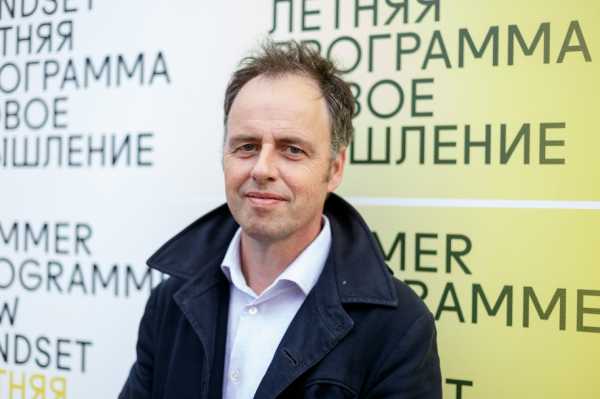
Фото: Михаил Голденков / Институт «Стрелка»
Развитие парков и природных зон, озеленение улиц и благоустройство набережных — изменение городской среды с помощью ландшафтного дизайна стало главной московской тенденцией последних лет. Голландское дизайн-бюро West 8 и его основатель архитектор Адриан Гёзе — первые, у кого этому стоило бы поучиться. С 1987 года они создают по всему миру природные комплексы в черте мегаполисов. Среди их самых известных проектов — ландшафтный парк «Говернорс-Айленд» в Нью-Йорке, парк «Ёнсан» в Сеуле, благоустройство набережной реки Мансанарес в Мадриде, а также реставрация острова Новая Голландия в Санкт-Петербурге. В этом году West 8 разработало совместно с КБ «Стрелка» проект реконструкции Тверской улицы (её первой части: от Моховой улицы до Пушкинской площади с прилегающими Никитским, Газетным и Вознесенским переулками. — Прим. ред) в Москве.

Губернаторский остров / фото: Timothy Schenck
Шестого июля Адриан Гёзе прочитал лекцию и на примере собственных проектов объяснил, как соединять архитектуру и природный ландшафт в городской среде. Архитектор встретился со Strelka Magazine и рассказал, что такое ДНК современной улицы и почему важно обсуждать с жителями крупные городские проекты.
— West 8 разработало проект реконструкции Тверской улицы в Москве. Однако его адаптацией занималось российское КБ «Стрелка». Не повлияло ли это на вашу первоначальную концепцию?
— Мне понравилось. Я думаю, это очень важно, что мы сотрудничали. Нам очень нравится работа с местными командами, и Москва не исключение. Работая над проектами общественных пространств, дизайном среды и мастер-планами городов, мы обязательно привлекаем местных специалистов в области транспорта, инженерии, управления и архитектуры. Например, над проектом общественного парка в Мадриде мы работали в команде архитекторов MIRO (союз между Burgos & Garrido, Porras La Casta, Rubio & A-Sala and West 8), в Нью-Йорке мы сотрудничали с Mathews Nielsen и как минимум с двадцатью другими консультантами. В Сеуле, разрабатывая проект сада «Ёнсан», мы также работали вместе с местными архитекторами (IROJE Architects & Planners), которые помогали нам адаптировать проект под местный городской контекст. Это распространённая творческая бизнес-модель — сотрудничество зарубежных и локальных архитекторов в рамках одного проекта.
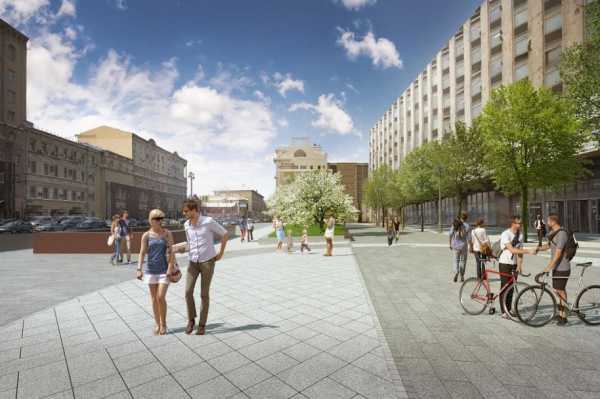
Проект реконструкции Тверской улицы / иллюстрация: КБ «Стрелка»
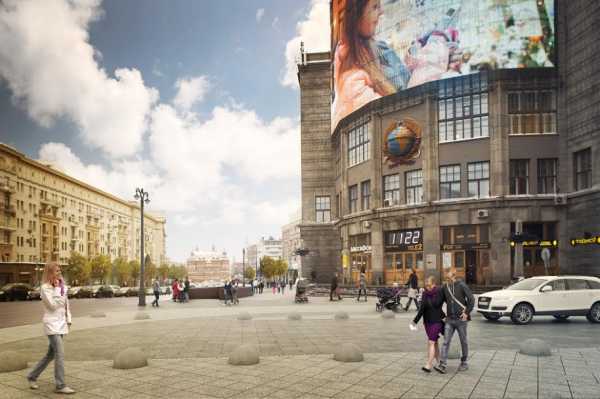
Проект реконструкции Тверской улицы / иллюстрация: КБ Стрелка

Проект реконструкции Тверской улицы / иллюстрация: КБ Стрелка
PreviousNextПроект реконструкции Тверской улицы / иллюстрация: КБ «Стрелка»
— Вы обсуждаете свои проекты с жителями?
— Да, всё время. Очень часто члены тех или иных сообществ на городских советах вносят свои корректировки в обсуждаемый мастер-план города. Мы привыкли работать над крупными городскими проектами, привлекая активистов местных сообществ. Они самым непосредственным образом участвуют в работе. В случае с мадридским парком, который мы делали, это удалось в меньшей степени, поскольку проект был привязан к выборам мэра и действующий градоначальник хотел сделать всё как можно скорее. В остальных случаях мы всегда прислушиваемся к мнению жителей.
— Какую роль играют власти?
— В большинстве случаев инициаторами и движущей силой проектов благоустройства были мэры городов. Они предлагали те районы, где, с одной стороны, был чудовищный автомобильный трафик, загрязнённый воздух, с другой — богатый культурный, исторический контекст и как следствие романтические ожидания местных жителей в отношении этих территорий. Занимаясь их реконструкцией, мы всякий раз пытались раскрыть заложенную в них идентичность.
— Что вы понимаете под идентичностью Тверской улицы и — шире — Москвы?
— У Тверской не одна идентичность — она включает множество смыслов и исторических подтекстов. Это Тверская XIX века, Тверская начала прошлого столетия и его середины, когда город пережил сильную трансформацию. В результате, хочется надеяться, улица сохранит их все и получит новую идентичность. Главная проблема Тверской сегодня — отсутствие жизни. Это территория машин, но не людей. Здесь мало баров, ресторанов, магазинов. Именно поэтому мы сделали акцент на расширении пешеходной зоны и её очеловечивании. Эту задачу точно смогут решить деревья, которые появятся на всём протяжении Тверской улицы и будут её главным украшением и летом, и зимой. Проект, который мы разработали, сосредоточен главным образом не на дизайне, а не инженерных решениях, выборе правильных видов деревьев и их посадке. Другой важный аспект — недостаток единства пешеходного пространства, потому что на Тверской сосуществует и плитка, и асфальт, и камень, и кирпич — хотелось всё привести к одному знаменателю. Именно поэтому, придумывая оформление для тротуаров, мы остановились на сером российском граните, под цвет цоколя домов, который подчеркнёт связь межу архитектурой и улицей.
— Многие москвичи недовольны тем, что сейчас происходит в городе. Тотальная реконструкция по всему центру и за его пределами доставляет массу неудобств, особенно летом. Стоит ли властям прислушиваться к мнению жителей, начиная столь масштабные проекты? С одной стороны, это нормальный демократичный подход, с другой — есть риск ничего не построить.
— Это очень политический вопрос. Я занимаюсь развитием общественных пространств тридцать лет и знаю, что благоустройство требует прежде всего экономической целесообразности, потому что оно не может состояться без огромных инфраструктурных инвестиций. Любая реконструкция ведёт к перераспределению автомобильного и пешеходного трафика, увеличению там деловой активности и как следствие росту цен на недвижимость. Честно говоря, я не вижу здесь какого-то конфликта. Гораздо более сложная проблема в Москве — ситуация с автомобильным трафиком. Недовольство ею действительно обедняет людей. Это же безумие: в пятницу город парализован автомобилями! Но Москва не уникальна в этом смысле. Такая же ситуация была в крупных городах США и Канады, где стали создавать shared space — улицы, где есть место и для автомобилей, и для общественного транспорта, и для велосипедистов, и для пешеходов, а также для тех, кто совершает ежеутренние или ежевечерние пробежки. Автомобили перестали быть центром вселенной именно благодаря таким общим пространствам. Думаю, Москве тоже стоит двигаться по этому пути. Ей нужна новая стратегия уличного дизайна и развития транспорта. Конечно, крупные магистрали и основные улицы города не могут стать shared spaces, это невозможно, да и не нужно. Они предназначены для автомобилей, которые пока никуда не ушли из нашей жизни. В остальных местах города они необходимы, иначе улицы навсегда останутся территорией конфликта между разными группами пользователей.

Мадрид Рио / фото: Municipality Madrid
— В центре Москвы на сегодня реконструировано около полусотни улиц. Многие критики нынешнего благоустройства обращают внимание, и справедливо, что в результате улицы утратили какие-то отличавшие их особенности, то есть ту самую идентичность. То есть благоустройство у нас — конвейерный процесс, а должен быть индивидуальным.
— Благоустройство любых общественных пространств состоит из базовых элементов, давайте будем честны. Везде есть деревья, бордюрные камни, фонари. Мне это нравится. Это ДНК современной улицы. Я не видел всех московских улиц, переживших реконструкцию, поэтому не могу утверждать, что это лучший путь, но в целом использование везде местного российского гранита — это очень хороший подход.
— Дизайн среды сейчас становится гораздо более востребованным и популярным, чем архитектура. По крайней мере это справедливо для Москвы с её парковым бумом последних лет. Как вам кажется, почему так происходит?
— Не уверен, что среда действительно важнее архитектуры, но кто станет спорить, что она важна сама по себе? Общественные пространства, их облик важны для людей. Я понял это много лет назад, когда занялся дизайном среды профессионально, и с тех пор ни разу в этом не усомнился. В 1960-е общественные пространства использовались для решения проблемы быстро растущего трафика. С тех пор мы далеко ушли в смысле развития технологий, в том числе транспортных, и общественные пространства сегодня существуют для людей. Современный девелопмент и другие бизнесы балансируют между разными социальными группами: пешеходами, автомобилистами, детьми, взрослыми, спортсменами — словом, всеми, кто населяет город в дневное и ночное время.
— В разное время вы участвовали в нескольких российских архитектурных конкурсах. Какой из них был для вас самым интересным и важным?
— Конкурс на ландшафтно-архитектурную концепцию парка «Зарядье», конечно.
— Почему?
— Я до сих пор не могу об этом говорить, потому что для меня это открытая рана. Мы очень много работали, представили, как мне кажется, более чем убедительный и логичный проект, но проиграли этот конкурс.
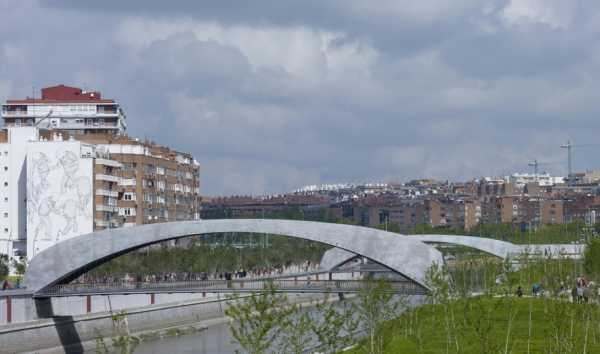
Мосты Пуэнте Каскара / фото: West 8
— Каким вам видится будущее архитектуры? Что мы увидим через двадцать-тридцать лет?
— Это очень хороший вопрос. Надеюсь, что эпоха архитектурных звёзд и вообще диктата архитектуры подходит к концу. Это совсем не по-русски и тем более не по-азиатски, потому что и в России, и в Азии архитекторы любят быть самыми известными, самыми богатыми, самыми яркими — словом, быть номером один. Но я хочу верить, что скоро это уйдёт в прошлое.
Текст: Ольга Мамаева
strelka.com
West 8 archives | Dezeen
-
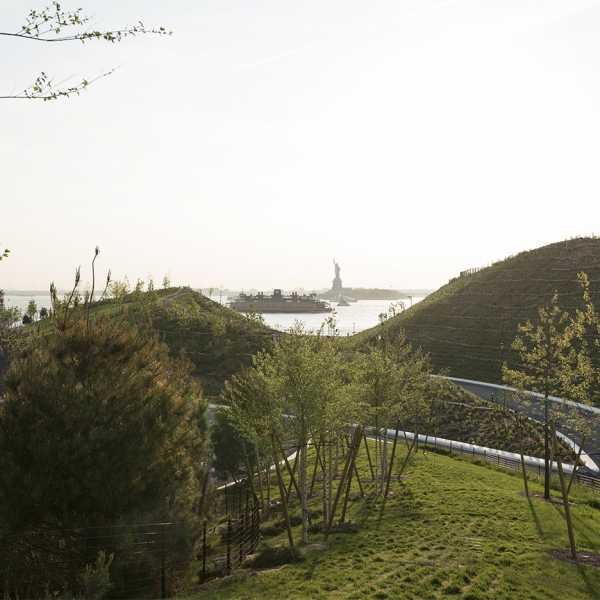
West 8 creates artificial hills on New York's Governors Island
Landscape architecture firm West 8 has added rolling hills with playgrounds and art installations across Governors Island in New York harbour (+ slideshow). More
Dan Howarth | 1 July 2016 | 3 comments -
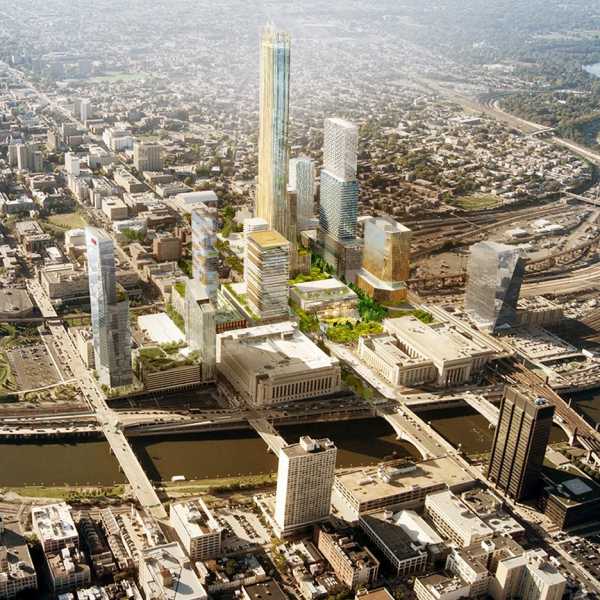
SHoP and West 8 masterplan extends Philadelphia skyline across the Schuylkill River
New York studio SHoP Architects and Dutch landscape firm West 8 have designed a new city quarter for Philadelphia that would extend the skyline beyond its traditional boundary, the Schuylkill River (+ slideshow). More
Alan G Brake | 11 March 2016 | 5 comments -

West 8 plans botanical garden for Houston featuring an arching tree bridge
Dutch landscape firm West 8 has masterplanned a new botanical garden in Houston, Texas, featuring a mosaic of gardens and a bridge incorporating an arch of trees. More
Jenna McKnight | 18 February 2016 | 2 comments -

The Hills by West 8 opening summer 2016 on New York's Governors Island
A park consisting of towering hills designed by Dutch landscape firm West 8 will open this summer on Governors Island, offering sweeping views of the New York Harbor and the city skyline. More
Jenna McKnight | 21 January 2016 | 1 comment -
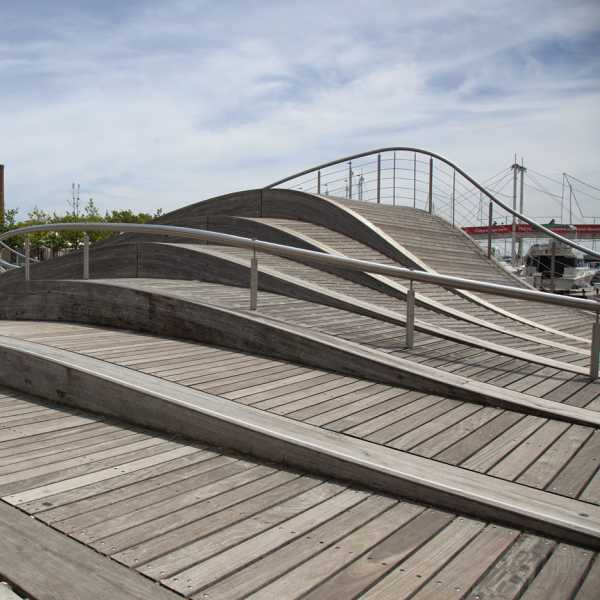
Dezeen's A-Zdvent calendar: WaveDecks by West 8
A trio of wavy bridges created by Dutch landscape firm West 8 in Toronto provide the letter W in our Christmas countdown of iconic contemporary bridges. More
Amy Frearson | 23 December 2015 | Leave a comment -

Rotterdam Centraal station reopens with a pointed metal-clad entrance
An angular metal-clad canopy now projects over a public square at the entrance to Rotterdam Centraal station, which reopened last week following an extensive remodelling by a team including Dutch firm Benthem Crouwel Architects (+ slideshow). More
Alyn Griffiths | 22 March 2014 | 8 comments -
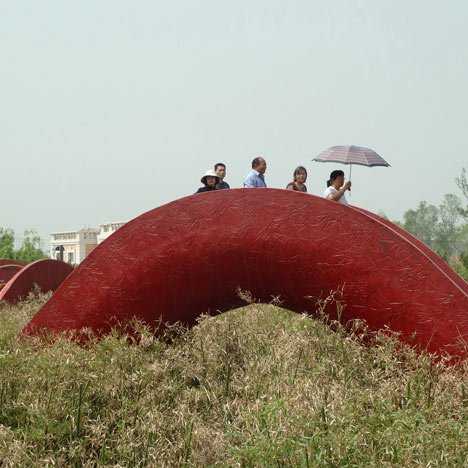
Garden of 10,000 Bridges by West 8
This park in Xi'an, China, by international architects West 8 recently opened to the public and contains red bridges offering vantage points. More
Amy Frearson | 8 May 2011 | 5 comments -
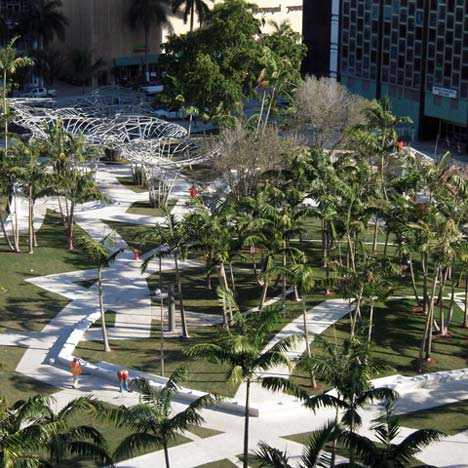
Miami Beach SoundScape/Lincoln Park by West 8
Here are some photos of the Miami Beach SoundScape park by Dutch landscape architects West 8, located next to Frank Gehry's New World Centre (see our earlier story) in Miami Beach, Florida. More
Catherine Warmann | 27 January 2011 | 5 comments
Refine your search:
Cats
Dezeen's top 10 houses of 2017

10 buildings that use classic cars to improve their image
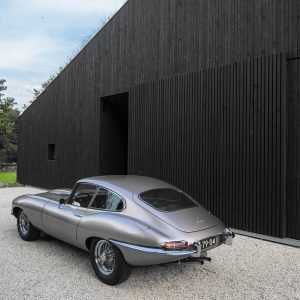
Rojkind Arquitectos completes concrete concert hall on the Gulf of Mexico
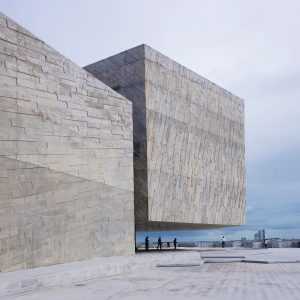
James Stewart Polshek to receive 2018 AIA Gold Medal
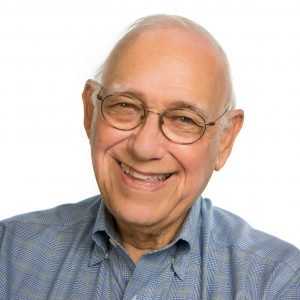
Pantone names Ultra Violet as colour of the year for 2018
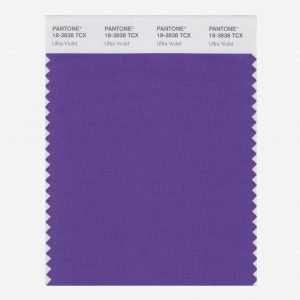
Subscribe

Subscribe to our newsletters
Competition: win a post-Brexit passport cover designed by Sam Jacob
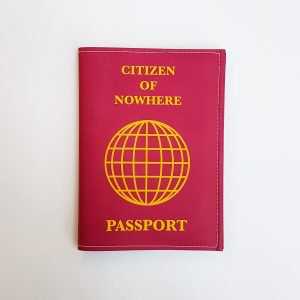
Alicante apartment renovated by Diego López Fuster Arquitectura references Hay products

Seven designer Christmas decorations to deck your halls
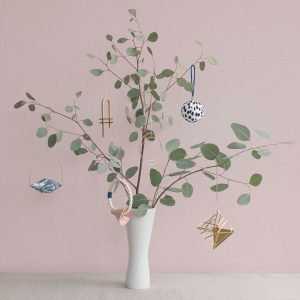
This week's Dezeen Mail features a sugar mill converted into a hotel
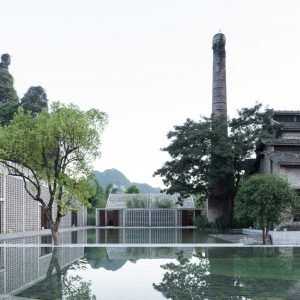
Dezeen Jobs

{{category}}
{{carousel_title}}
www.dezeen.com


